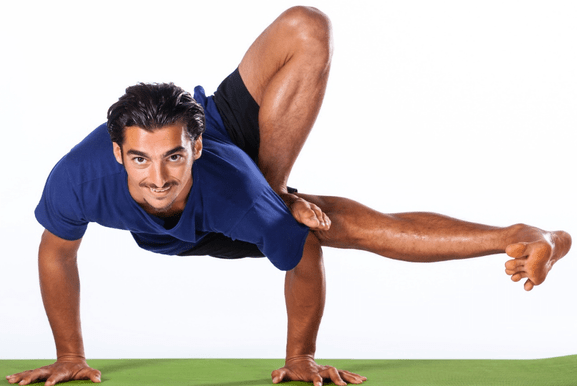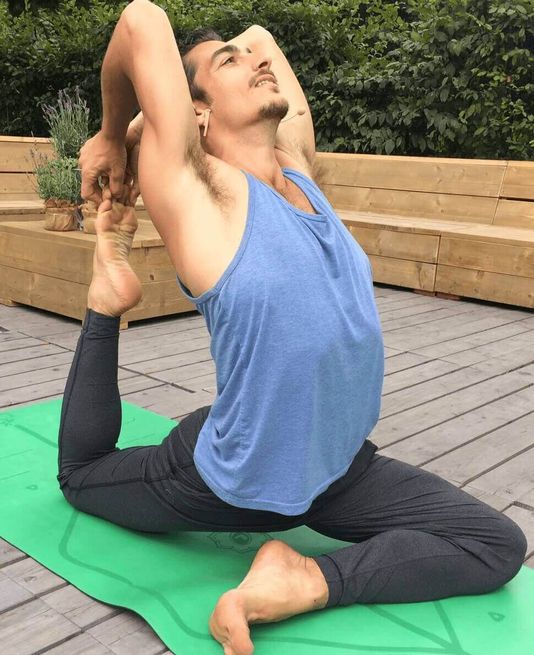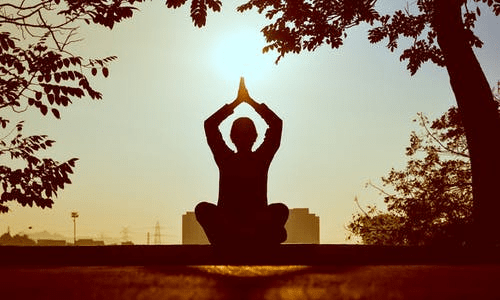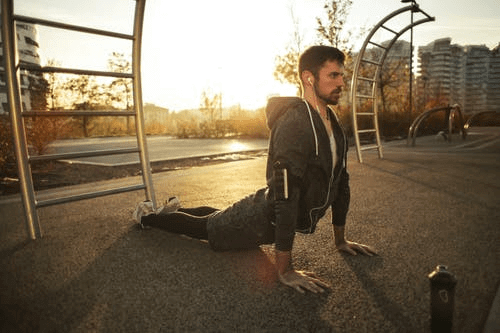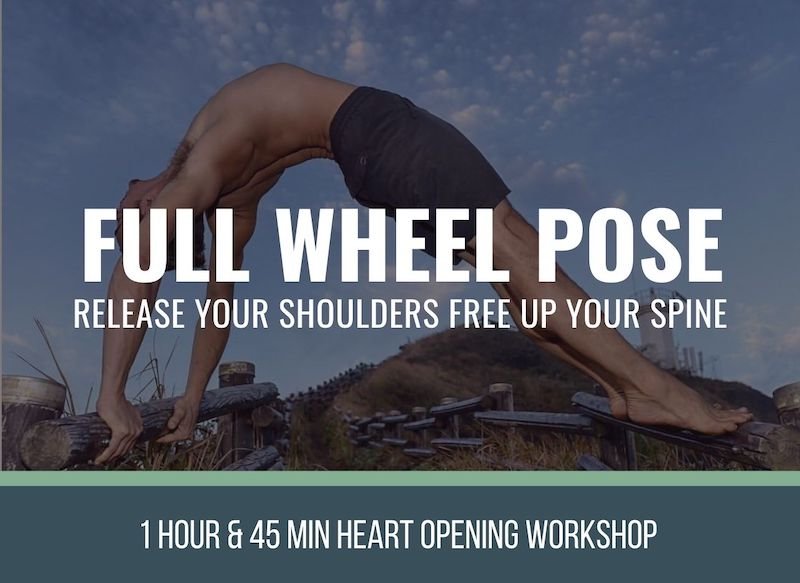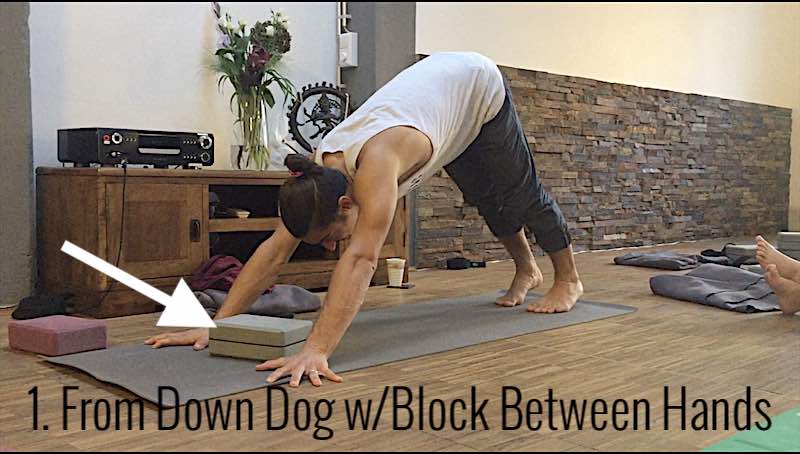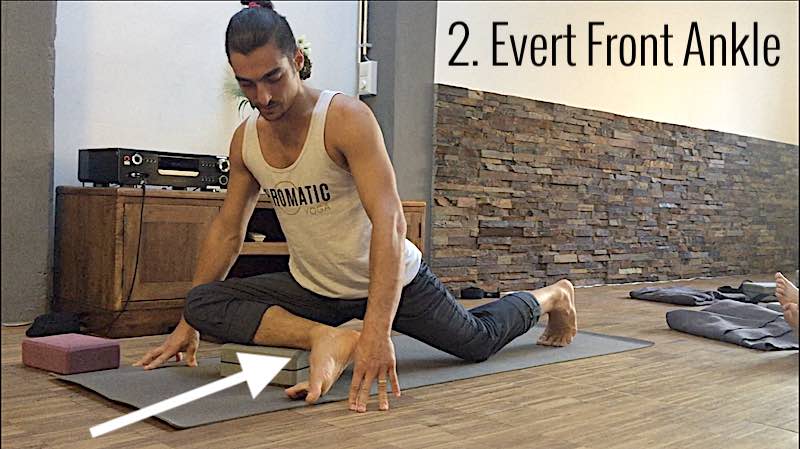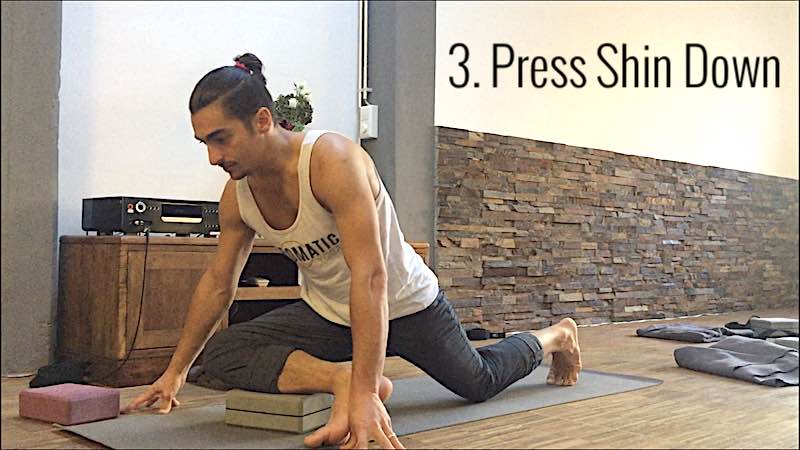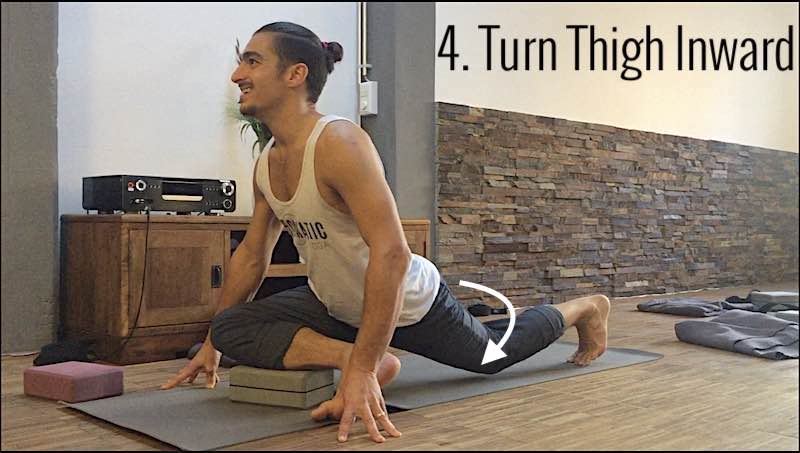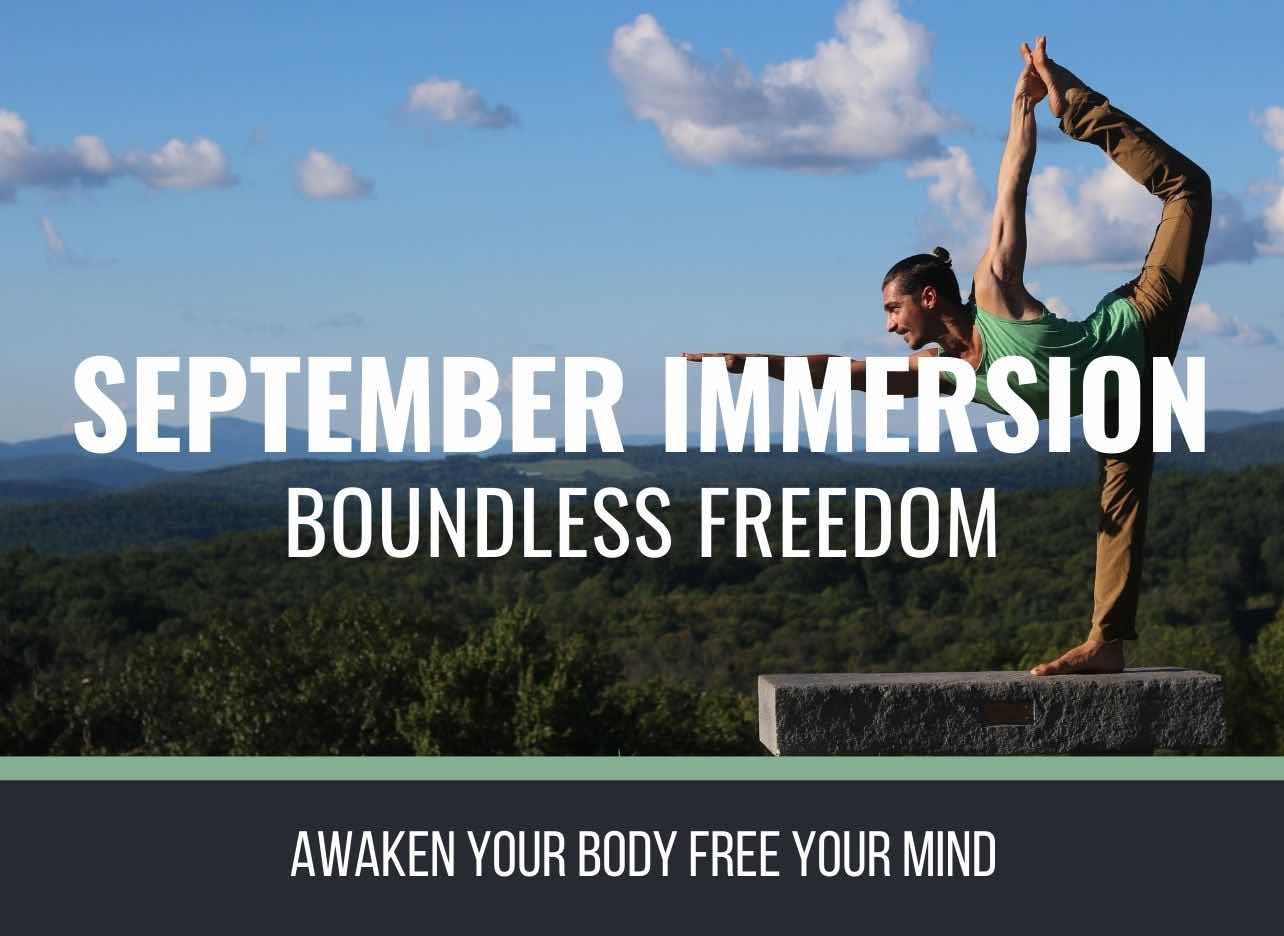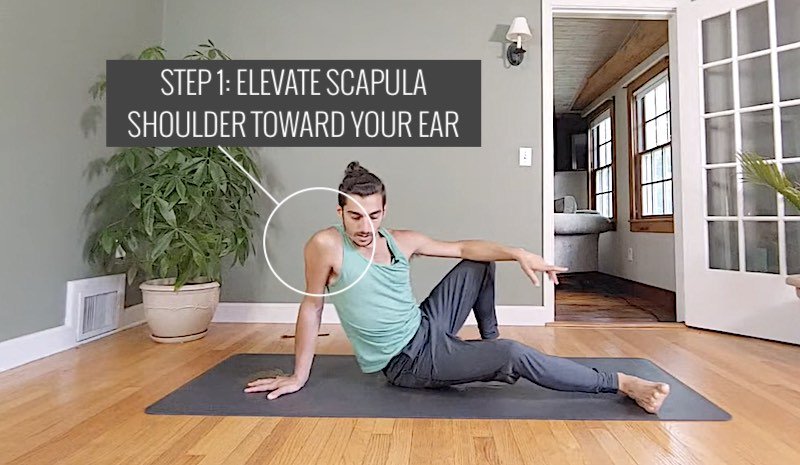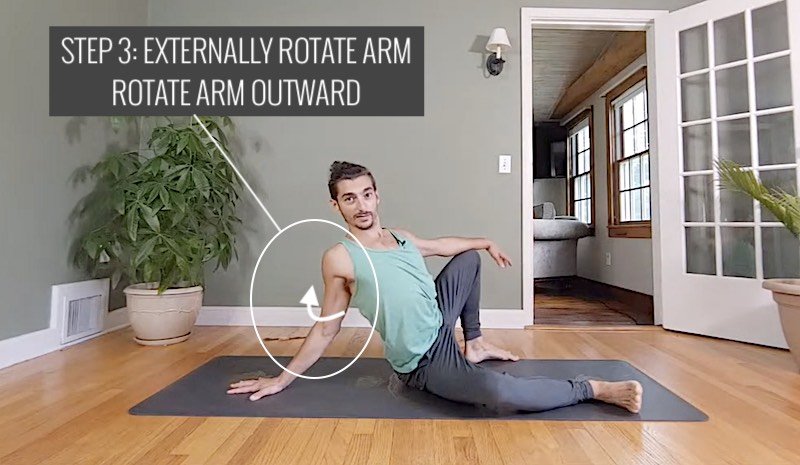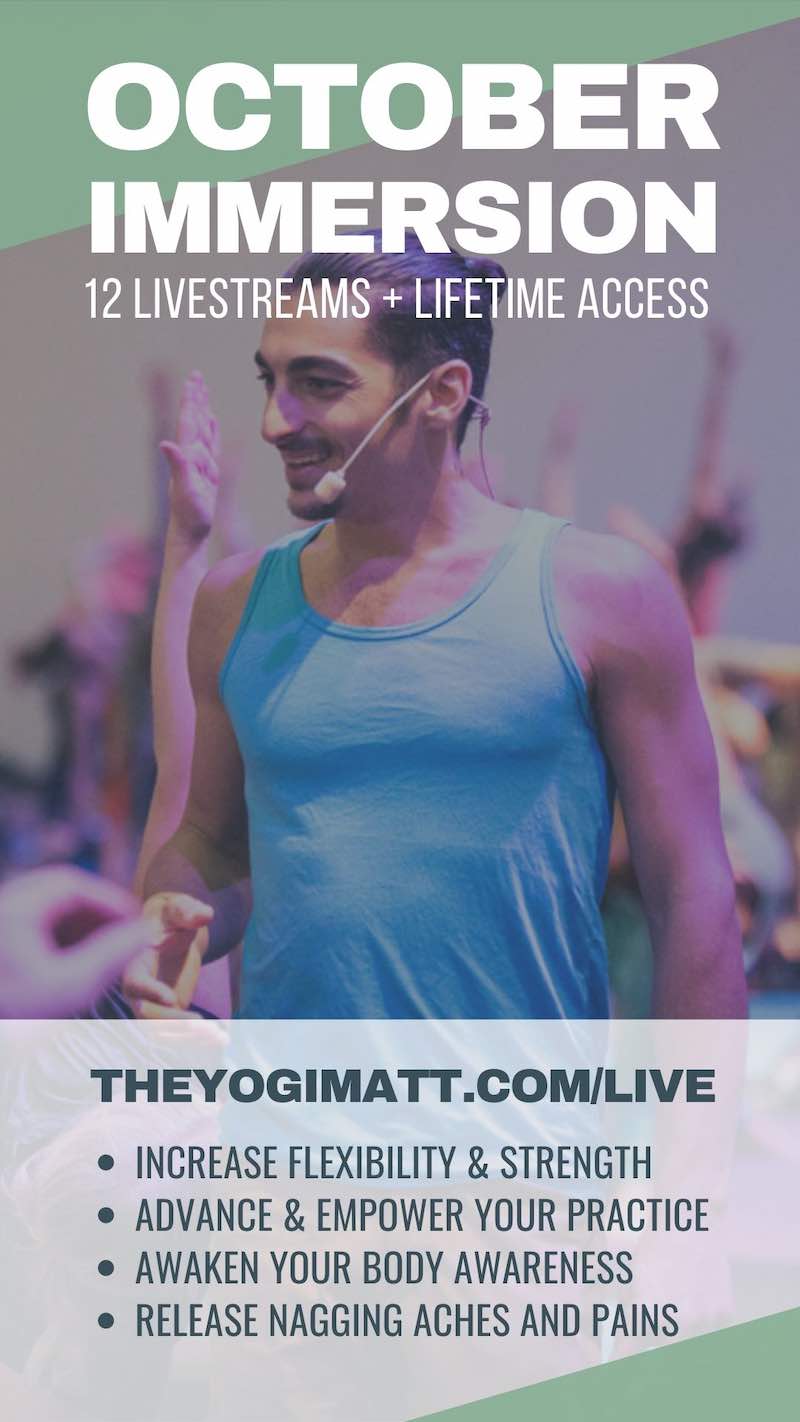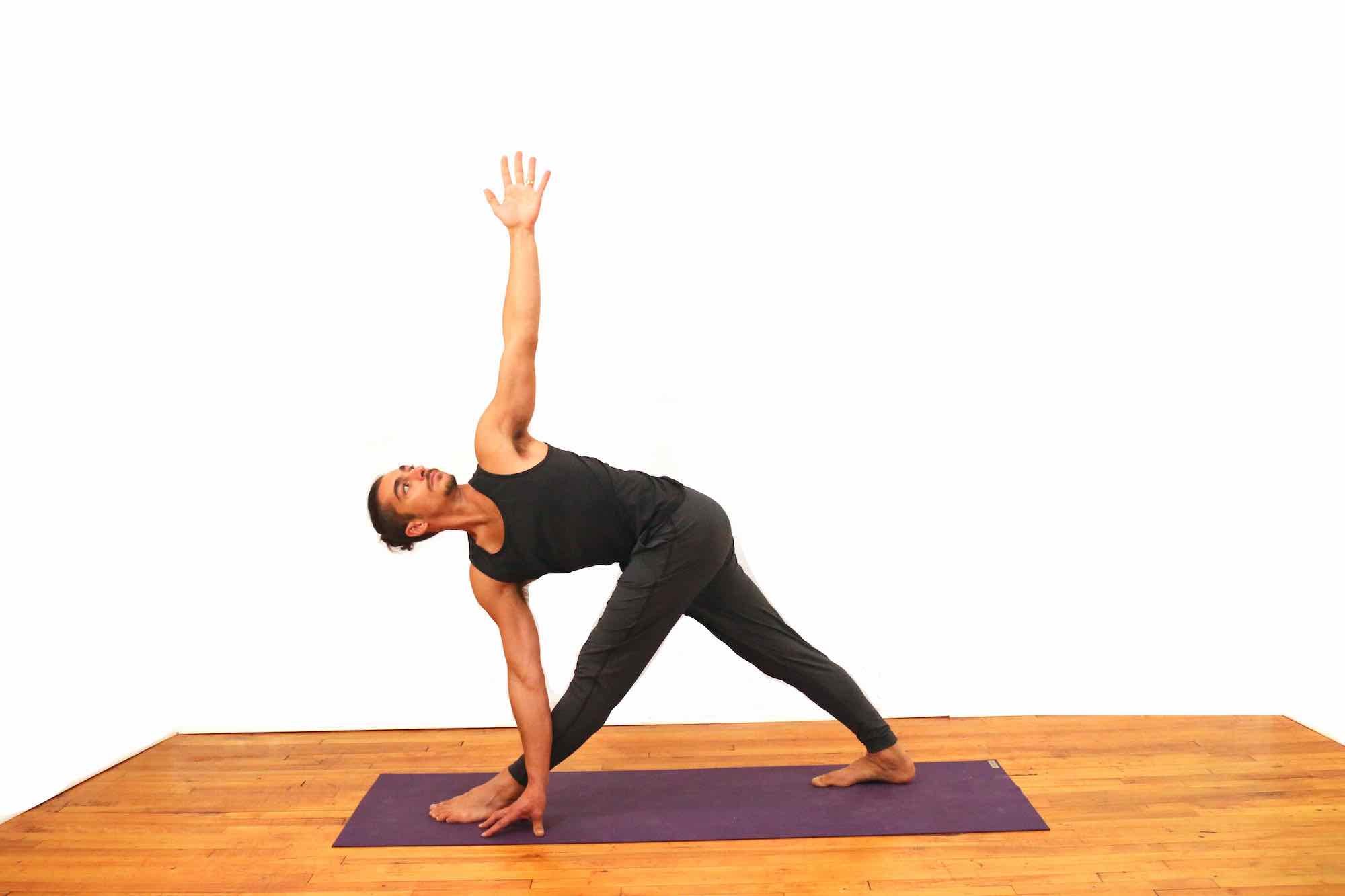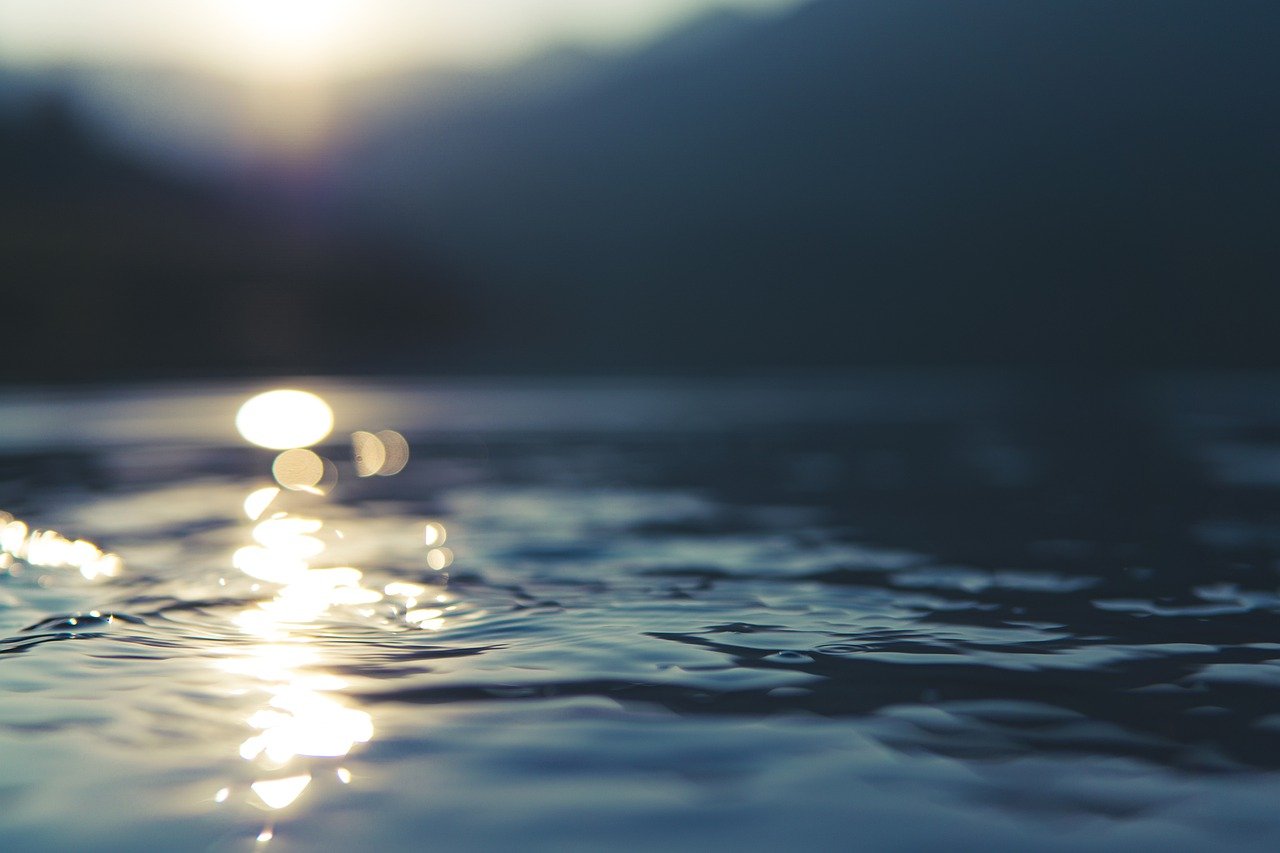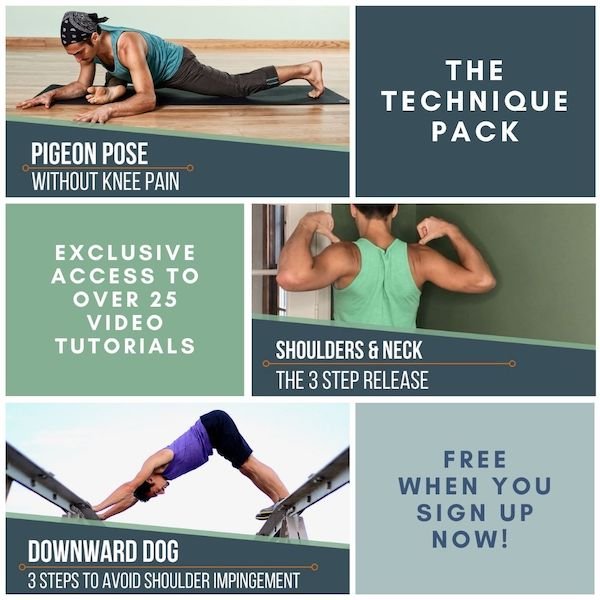by matt | Feb 28, 2022 | Home Page, Main Page Display
DEEPER TWISTS
INCREASE SPINAL MOBILITY WITH THE FIRE LINE
DEEPER TWISTS & SPINAL MOBILITY: “FIRE LINE”
Do you correlate strength with twisting postures in your yoga practice, or is it flexibility that comes to mind first? There’s no doubt that both strength and flexibility are required for deeper twists, but let’s shine the spotlight on strength as we take a deeper look into how we can unlock our true potential when it comes to the execution of twisting postures in our asana practice.
YOUR INTENTION FOR THE TWIST
Twisting postures in yoga are known for their multitude of benefits. Let’s understand though that our intentions behind various twisting postures and the ways in which we execute them can benefit vs. harm our bodies to varying degrees. We may also have very different reasons for incorporating twists into our asana practice. If the goal is to create more of a therapeutic experience, then gentler twists may be the appropriate approach to take. If the intent and/or purpose is to work more deeply into a twist, then there are ways to heighten the experience with proper awareness and activation (we’ll see this shortly with Matt’s unique approach). Whether there is some level of vulnerability due to injury or not, doing things like pushing through the arms or trying to force more deeply into a twist can in fact cause harm, and this is never the desired outcome.
Yes, all movements on or off the mat will indeed place varying degrees of pressure on the discs in our spine, and, outside of the body’s natural resilience, there are ways in which we can create more integrity to support these movements. Although simply by twisting, we increase the amount of pressure on the spinal discs, twisting is also the answer to the question of how to increase their health.
Our discs require nourishment, and I love the sponge analogy — the “squeeze and soak effect” — when considering how to stimulate this nourishment. An appropriate twisting action or posture can actually help to equalize the pressure in the discs by supplying them with fluid, which allows them to expand. This creates more space and shock absorption between each vertebra, allowing your spine to react with more resilience to movements that create more weight, pressure, and/or impact in your body.
Now, Matt’s approach to twists is quite unique and extremely effective. His approach asks you to bring your focus and awareness to where you can create activations with more intention in order for your body to respond with greater ease.
WHAT IS THE FIRE LINE?
If you’ve been following Matt and/or practicing with him, then you are familiar with his Chromatic Approach to yoga. Regarding the physical practice, we understand this approach as systemic with a deep awareness of how we move our bodies and progress to a “peak posture.” Something Matt created is the idea of the “Fire Line,” which he describes as a kinesthetic chain of muscle activation, or a co-activated line of muscle, or a co-ordinated engagement of several muscles in order to gain greater access to balance, strength, stability, and flexibility.
MUSCLE ACTIVATION IN THE FIRE LINE
Matt starts off by explaining that we first bring our attention and awareness to the serratus anterior on one side of the body, which funnels into the external obliques through the linea alba, then traveling underneath the external obliques on the other side of the body to the internal obliques, which then go down to the opposite hip bone.
The Fire Line branches off “like a river” in 2 directions. The 1st branch goes to the outside of the gluteus maximus down through the IT band and connects to the outer shin. The 2nd branch goes from the inside of the hip—the iliacus and/or psoas muscle, which is on the inside of the bowl of your pelvis and attaches right at the inner thigh, where it meets the pelvis inside of the femoral head (inside of thigh bone). This all travels in the same direction, where we find the adductor group, which runs at the inside of your leg; some of the muscles in this group attach down at the shin.
We draw a thread of connection all the way through. Through Matt’s dedication to practice and his experience with his own body and with teaching and observing his students, he realized that activating this line allows the yoga practitioner to execute a variety of different twisting postures with great integrity and ability.
He highlights that the “center of the fire” is right at the core. We must recognize that the fire goes inward and creates a rounding through the back of the body. The key is to bring awareness to this rounding by exaggerating a pulling back of the ribcage.
With all of this in mind, we can see why strength plays a key role. Instead of just “dumping,” or forcing our bodies into a twist, we very thoughtfully engage the muscles in this Fire Line to more safely and deeply experience a variety of twisting postures.
REVOLVED CHAIR POSE
Take a close look at Matt’s deliberate actions in today’s video. What we see is not only the chromatic approach, the build, the preparation; but we see the activation of the fire line in order to avoid the collapse into Revolved Chair Pose.
When we approach twisting postures with strength as the anchor, not only do we execute twists with more purpose, but overall we feel more empowered in our bodies and our practice. What a beautiful outcome.
Imagine getting this type of insight on your practice on a regular basis, and being able to integrate it into your mind and body. Online Immersions with Matt are the perfect way to get techniques like the fire line into your practice. Each immersion consists of 12 all levels classes so you can advance your body awareness and deepen your practice.
If you have been practicing with the immersions than you know exactly how powerful and effective they are.
But what if you want to share this knowledge with others? Take advantage of the opportunity to study with Matt in his upcoming teacher trainings. His 200 and 300 Hr trainings are open for enrollment.
The 200 Hr. Teacher Training: Click Here to See The Next Start Date
This is for you if you are interested in deepening your yoga practice, building your confidence, learning how to create a class, sharing this practice with friends, family or beyond. Yes it’s for all levels, ages, etc.
The 300 Hr. Advanced Teacher Training: Click Here to See The Next Start Date
This training is definitely for you if you are already certified at the 200 or 500 hour level but want to take your teaching career and practice to the next level. In this training you will learn Anatomy, Bio-mechanics, Postural Techniques, Intelligent Sequencing, Breathwork, Meditation, Heart Centered Philosophy, Theming, Business Structure, Marketing, Social Media, Branding and how to build a sustainable and successful career!
Article by Trish Curling @anioyoga
Video Extracted From: The 200 & 300 Hour Trainings and April 2020 Immersion “The Greatest Hits”
When You Subscribe, You Will Get Instant Access to
- the Technique Pack: 15 yoga pose breakdowns
- exclusive online course discounts
- exclusive blogs and videos
by matt | Nov 17, 2021 | Main Page Display
REVERSE WARRIOR
INCREASE BACK FLEXIBILITY WITH THIS PARTICULAR ALIGNMENT
REVERSE WARRIOR: PREPARE FOR BACKBENDS
Full expansion, widespread freedom, release, and openness — this might describe what we feel as yogis when it comes to the shape of a backbend or heart-opening posture in our yoga practice. We might see ourselves floating easily into this posture and enjoying the lengthening in our front body along with the confidence and strength we embody in our upper and back body (depending on the posture).
Alternatively, we might think about pain, tension, injury, constriction, fear, limitation, even inadequacy if we can’t “achieve” the posture. These are all real experiences, thoughts, and emotions we may have when it comes to backbends. We must always consider, however, what our intent is when it comes to our practice and how we can still find enjoyment and expansion within our bodies, hearts, and mind.
Backbends are also referred to as heart openers because they are associated with doing just that: opening your heart from what may be closed off, such as buried energy and/or emotions like fear, mistrust, sadness, or frustration and anger. We may go to backbends in our practice to shift this energy, to release it. Through this idea, we can create more space between ourselves and our pain. If we can’t make these shapes with our bodies for various reasons, do we not have the ability to shift these energies? The answer: Of course we do.
If it’s not an injury or condition that is preventing you from creating these shapes, you can approach a backbend through preparation. (This is not to say you can’t experience release in other ways, like using pranayama to unlock freedom, but that is for another discussion.) Begin by stepping back from what you envision as the end result and looking at placing your attention on areas that focus your mind, prepare your body, and allow you to let go of outcomes.
I’ll show you how we can do this with Reverse Warrior. If we place our awareness specifically on how we execute lateral flexion with the torso in this posture, it offers solid preparation for backbends. It takes our focus into the process. We are investing “well-placed effort” in how we deconstruct the appropriate actions. We can then experience and feel more expansion, opening, freedom, and release with this “preparatory posture.”
The required flexibility in this posture is directly parallel to the flexibility required in a backbend. I’ll discuss this further. Let’s talk about this well-placed effort first.
Abhyasa and Vairagya in Our Asana Practice
In Tantra of the Yoga Sutras, Alan Finger eloquently explains the ideas of abhyasa and vairagya, “the forces of effort and surrender” [Sutras 1.12 – 1.16], in our asana practice:
“Abhyasa means making your best effort to focus all the vritti* on one single point, whether it is an action, object, thought, or image … Vairagya is the second part of the recipe. Vairagya is the ability to let go of any desire for the fruits of our efforts to focus the mind. This allows our consciousness to take action in the world without attachment.”
*Vritti is the Sanskrit word for all the images, thoughts, emotions, reactions, and belief patterns that are the activity of the mind.
Finger, Alan. Tantra of the Yoga Sutras Pg.22 – 27 )
With this understanding of abhyasa, we can place our attention on how we execute Reverse Warrior for better preparation for heart openers.
Required Flexibility For Backbends
Wheel Pose (Urdva Dhanurasana) and Camel Pose (Ustrasana)
Just by simply looking at the shapes below, we can see the similarities.
Both of these postures require flexibility in the pectorals, front deltoids, abdominals, and hip flexors.
How does this compare to Reverse Warrior?
Reverse Warrior requires lateral flexion of the spine, opening the internal and external oblique muscles because of the side bend. It requires flexibility of the latissimus dorsi, rectus abdominis, and the lower fibers of the pectoralis major for greater extension of the spine.
In the video, Matt demonstrates the added “lift of the heart more forward and up.” This is in fact that well-placed effort (abhyasa). Lifting and turning the heart may seem like a small action, but it is actually how we prepare with much more intent for the backbend. Matt describes how with this action, we open the obliques, crossing the whole mid-section into the linea alba, opening up the side body muscles. Adding the turn, we stretch the rectus abdominis to provide us with greater extension of the spine. Greater extension also means more access to a particular backbend.
Bringing It All Together
What is our intention? We must ask ourselves this question. Is it the outcome or the experience? If we can settle and focus the mind with well-placed effort (abhyasa) at the same time as releasing expectation for the outcome (vairagya), we can let go of the mind attachments and just experience. Abhyasa and vairagya, when practiced together, help us to release, even dissolve our attachments. Is it not then arguable that in this state, we are experiencing the freedom, openness, vulnerability, and expansion we desire from backbends?
Let’s actualize this state of being in our practice as a whole. Let’s step into this in Matt’s current immersion, Spinal Awakening, where he explores movements of the spine, always through the lens of abhyasa and vairagya.
The focus in this immersion is on heart openers, twists, side bends, and forward folds.
Matt’s intention and emphasis is always about you getting to know your body in order for you to tap into your own individual highest potential. This looks like and is expressed in many different ways. Matt invites you to let go of defining yourself as a specific kind of practitioner and encourages you to delve into your own path without any burden of what the outcomes may look like.
Let’s meet with open hearts on the mat in Spinal Awakening.
It’s never too late to join in. Click here to gain lifetime access to the immersion and to yourself!
Written By Trish Curling @anioyoga
When You Subscribe, You Will Get Instant Access to
- the Technique Pack: 15 yoga pose breakdowns
- exclusive online course discounts
- exclusive blogs and videos
by matt | Nov 11, 2021 | Main Page Display
TECHNIQUE FOR DEEPER FORWARD FOLDS
ACTIVATE TFL & RECTUS FEMORIS TO INCREASE HAMSTRING FLEXIBILITY
DEEPER FORWARD FOLDS: PRASARITA PADOTTANASANA
It’s not unusual to feel “stuck” in our yoga practice at times. We may come to a place in our physical practice where we are not experiencing our full potential. One of the common areas we may feel “stuck” is with our flexibility.
In my previous article, Healthy Hamstrings, I discussed a technique Matt shows us to create more flexibility in our bodies: facilitated stretching. There is yet another technique to encourage a flexible body, which I want to discuss more here. That’s reciprocal inhibition.
Reciprocal inhibition is doing the opposite of what a facilitated stretch asks us to do. It’s true that we are still activating muscles in order to achieve greater flexibility, but we are now activating the muscles that oppose the muscles that are stretching.
In today’s video, Matt demonstrates how to explore these actions in Prasarita Padottanasana: Wide-Legged Forward Fold.
PRASARITA PADOTTANASA: WIDE-LEGGED FORWARD FOLD
In Prasarita Padottanasana (an open-hip posture), our legs are in abduction, while we also flex at the hip. This position requires flexibility in our hips, adductors, and hamstrings, and there are also key areas to explore activation of potential strength. These areas include adductors, abductors, quads (including the rectus femoris, which is also a hip flexor), and hamstrings.
Activating the adductors and hamstrings supports the facilitated stretch technique because those muscle groups are already being actively stretched. On the other hand, activating the abductors and quadriceps generates the reciprocal inhibition technique, because those muscles oppose the adductors and hamstrings. In this video segment, Matt demonstrates why and how to activate the quadriceps and one of the abductors, called tensor fasciae latae, or TFL for short.
PREPARE THE POSTURE
With your feet spread wide on your mat, turn your thighs slightly inward. This will allow your toes to also turn slightly towards one another.
With your hands on your hips, initiate an anterior tilt of your pelvis as you tip your torso forward.
Hands come to the floor or blocks in front of you to support. If your hamstrings feel tight in this position, reciprocal inhibition is about to help with that.
How to Activate Your Quadriceps: Reciprocal Inhibition Technique
Activate your quads by energetically lifting your thighs away from your knee caps.
Feel as though you are drawing your upper thigh bones up into your hip socket. Matt describes this as almost “suction-cupping” your thigh bones upward, which will help turn on hip flexors and quads.
You activate reciprocal inhibition the moment you engage your quads, because when these muscles are activated, the opposing muscles release (in this case, the hamstrings), and you’re able to relax more deeply into the pose.
TENSOR FASCIAE LATAE (TFL) ENGAGEMENT FOR DEEPER FORWARD FOLDS
Just as activation of your quad muscles, in particular the rectus femoris, will help you deepen into your forward fold, Matt explains that activating the TFL (tensor fasciae latae) will also deepen forward folds. Like the rectus femoris, the TFL is also a hip flexor but can be easier to engage because of its additional functions as an abductor and internal rotator. By isometrically pressing your heels away from each other, you will trigger TFL to engage. Pushing the heels or backs of the legs away from each other is both abduction and initiates internal rotation. If you don’t know these anatomy terms, do not worry; just apply the action of pressing the backs of the legs apart and you will feel your outer hips engage, supporting you in tipping your pelvis forward.
Why take this approach?
Aside from achieving deeper forward folds, is there a reason to apply this approach? We must, in a sense, be a “professor in our postures.” What does this mean?
It means that there is infinite space for inquiry in our practice. Each time we step onto the mat, we have an opportunity to examine and reflect on how we approach our practice. Equipped with this kind of knowledge, our practice becomes more informed and supports our ability to realize our potential and create resilient and healthy tissues. Then we really start tapping into what is available to us in our bodies by using fundamental actions that our bodies are so brilliantly designed to perform.
Matt’s November 2021 Immersion, Spinal Awakening, includes the following:
- Twists • side bends • forward folds • heart openers
- Techniques to strengthen and mobilize the spine
- Releasing back tension and discomfort
- Twelve 75-minute classes, all levels appropriate
- Advancing your postural practice
- Lifetime unlimited access to all
Take advantage of this opportunity to awaken both mind and body.
Already have Spinal Awakening and want another immersion to support you in deeper forward folds? We suggest the Hips & Hamstrings Immersion!
Written By Trish Curling
When You Subscribe, You Will Get Instant Access to
- the Technique Pack: 15 yoga pose breakdowns
- exclusive online course discounts
- exclusive blogs and videos
by matt | Nov 1, 2021 | Main Page Display
SIDE CROW: POSE TUTORIAL
UNLOCK YOUR ARM BALANCE PRACTICE
Side Crow is a challenging yoga posture, but it is more accessible than most people think. There are ways of “cheating” in the posture that can make the shape more attainable, such as placing your hip on your elbow. In this tutorial, we won’t be going over that version. The intent here is not to help you attain a shape but rather for you to gain both a greater awareness of how your body works and ways in which you can strengthen it. As a result of increased strength and body awareness, postural attainment is inevitable, but the process is far more fulfilling and long-lasting.
WRIST STRENGTH TO BREAK THE FEAR
Side Crow is a yoga pose that requires a twist of the spine, and like all other arm balances, upper body strength and technique are a must. The most important muscle group to strengthen is the flexors of your wrists. These are the muscles that stop you from falling, and since fear of falling often holds people back, you will want to make sure these muscles are ready for the job. The easiest way to strengthen the flexors of the wrists is to start gripping your fingers into the ground. Of the muscles in this muscle group, 2 are in charge of finger flexion as well. Finger flexion is like making a fist or grabbing something. Grip the ground in postures like All 4s, Down Dog, Plank Pose, and Chaturanga, and with repetition, you will get stronger and stronger.
UPPER BODY STRENGTH FOR ARM BALANCES
The second important muscle group to focus on when working toward Side Crow are the shoulder muscles, namely the serratus anterior, rotator cuff, anterior deltoids, and pectoralis muscles. For the purpose of this article, we don’t need to get into what each of these muscles does; just know that they form the structure for your arm balances. Mostly, what you need to do is try and maintain Plank Pose with a rounded, full upper back, where your shoulder blades are apart from each other. Minimize the elbow bend — most people bend their elbows too much and lose stability in the upper body, making the foundation spongy. A microbend at the elbows is all you need. See the video below to get an idea of how much to bend.
THE PRIMARY AND SECONDARY FOUNDATIONS
Now let’s get to the good stuff! All arm balances have what I call “2 foundations.” You have the primary foundation, which is the hands — this is most important. Then the second foundation is where the leg(s) rests upon the arm. With all foundations, we want to dig downward like a tree rooting into the soil. The fingers gripping the earth is a downward dig. For Side Crow, our second foundation is where the thigh connects to the arm. If you press the thigh down into the arm, your hips magically lift. It’s not magic actually; that’s just the mechanics and science. In this case, the muscles that do the pressing down are called the abductors (gluteus medius, gluteus minimus, gluteus maximus, and tensor fasciae latae). To get these stronger, follow along with the video below.
THE CORE: WHY ARE THE LEGS APART?
The last point of discussion is what connects the upper body and lower body: the obliques. Because this posture is a twist, the major core muscles that we need to activate are the external obliques. These muscles will help us to twist, and in the case of Side Crow, we can actually use them to untwist. This is confusing, but once you are in the shape of Side Crow, you are working to untwist along with the abductors, which will keep your buttocks up high and make the posture feel light instead of heavy. In the video, I go over some oblique warm-ups. When you are in Side Crow, it is quite hard to think about untwisting, which is why I show you a technique hack. By abducting the legs away from each other in Side Crow, you will automatically untwist the spine, and your hips will have to lift upward. The abductors of the hips and the obliques work together in this action, and you won’t have to waste brainpower trying to make it happen.
When You Subscribe, You Will Get Instant Access to
- the Technique Pack: 15 yoga pose breakdowns
- exclusive online course discounts
- exclusive blogs and videos
by matt | Oct 13, 2021 | Main Page Display
HEALTHY HAMSTRINGS
FACILITATED STRETCH TECHNIQUE
Hip And Hamstring Flexibility
Why Is Hip Mobility Important?
Tight hamstrings are a common complaint. This may be because it’s one of the most noticeable things to show up in our yoga practice and in our daily lives. How many times have you heard someone say, “I can’t even touch my toes anymore!” Or maybe you have said this yourself. Now, touching our toes does not define our worth; the awareness of this limitation and tension in this area of the body simply provides opportunities for us to investigate. Too often, this investigation leads to repeatedly stretching the area in order to lengthen and hopefully release the tightness. However, continuously stretching hamstrings will not likely provide us with the flexibility we desire and may actually cause further tension, pain, or injury to hamstrings and other areas in our bodies. In order to increase flexibility while maintaining the health of the muscles, we must incorporate a technique called facilitated stretching.
WHAT EXACTLY IS MUSCLE TIGHTNESS?
First, let’s discuss why muscles become tight. Muscle tightness results from an increase in tension through active or passive mechanisms. Passively, muscles can become shortened through postural adaptation — think sitting, or walking in high heels all day — or through injury and scarring. Actively, muscles can become shorter due to spasm or contraction. Regardless of the cause, tightness limits range of motion and may create a muscle imbalance.
Page, Phil. “Current concepts in muscle stretching for exercise and rehabilitation.” International journal of sports physical therapy vol. 7,1 (2012)
What is facilitated stretching, and how can we utilize it to increase flexibility in our hamstrings?
What Is a Facilitated Stretch?
This occurs when we activate, or contract, the same muscle(s) we are stretching. There are two types of muscle contractions — isotonic and isometric: “An isotonic contraction is a voluntary muscle contraction that causes movement … An isometric contraction is a voluntary contraction in which no movement occurs.”
Charland, Jeff & McAtee, Robert E., Facilitated Stretching Fourth Edition, 2014
The latter is the action we adopt in a facilitated stretch. Knowing this is important because it is how we maintain the health and integrity of the muscle. If we don’t engage our muscles, eventually they might lose their ability to contract. Losing this ability can lead to imbalances in our bodies; when these imbalances are significant, we can experience a decrease in range of motion. This decrease can lead to injury or chronic pain.
IMPLEMENT FACILITATED STRETCHING
How can we cultivate this in our practice?
One of the best ways to incorporate facilitated stretching into our practice is to go slowly and to utilize props that will support the process. In the video below, Matt demonstrates the use of a facilitated stretch in forward fold, using a chair. He breaks it down into 4 digestible actions.
Four Actions to Utilize Facilitated Stretch in Forward Fold
- Lean forward into the big toes.
- Press the back of the hamstrings apart.
- Move the sit bones up to the sky (will pull up on the hamstring and start to straighten the knees).
- Move the sit bones down toward the heels, but don’t move your pelvis.
STRATEGY FOR HEALTHY HAMSTRING FLEXIBILITY
You may also enjoy the original blog paired with this video, “Avoid the Yoga Butt”
Suggested Immersion: Hips and Hamstrings: 12-Class Immersion
WHAT IS PNF?
Facilitating these actions may also be referred to as proprioceptive neuromuscular facilitation (PNF).
“Multiple studies have shown that PNF stretching is superior to traditional static stretching in terms of improving active and passive range of motion. It can be used to supplement daily, static stretching and has been shown to help athletes improve performance and make speedy gains in range of motion. Not only does it increase flexibility, but it can also improve muscular strength. What’s more, PNF stretching is believed to repair the microscopic damage that typically follows a high-intensity workout.”
Wicke J, Gainey K, and Figueroa M. A comparison of self-administered proprioceptive neuromuscular facilitation to static stretching on range of motion and flexibility. Journal of Strength and Conditioning Research. 2014; 28(1): 168–172.
Sharman MJ, Cresswell AG, Riek S. Proprioceptive neuromuscular facilitation stretching: Mechanisms and clinical implications. Sports Medicine. 2006; 36(11): 929-39.
All that being said, it’s important to also consider the amount of activation we utilize. It’s recommended that we only engage roughly between 15% – 20%. We want to stay on the side of a more conservative amount of force so as not to channel too much force to the joints, thus minimizing injury.
To more fully understand this, click here for Matt’s 12-class immersion
Hips & Hamstrings, which took place in June 2021. To help you explore and uncover the strength in your own body, Matt’s new 12-class immersion, Strength, starts in October. Sign up today for lifetime access.
Written by Trish Curling
Handstand Training
Learn the techniques that make Handstand fun, easy and accessible! This 2 part course consists of the top most effective exercises will increase your strength and technique so you can easefully balance a handstand.
View Details
SHOULDER REVELATION
In this 12 class immersion you will practice specific techniques to strengthen and unlock your shoulders. Each class focuses on a specific joint articulation and muscle group so you gain mastery in the shoulders.
View Details
HEART OPENERS
Finally, a 12 class immersion designed specifically to help you discover the freedom of heart openers. Learn how to avoid uncomfortable compression, and awaken your true range of motion in a step by step manner.
View Details
When You Subscribe, You Will Get Instant Access to
- the Technique Pack: 15 yoga pose breakdowns
- exclusive online course discounts
- exclusive blogs and videos
by matt | Oct 1, 2021 | Main Page Display
YOGA JUMP BACKS & JUMP FORWARDS
THE DREAMY, MYSTICAL FLOAT
dreamy yoga jump backs and jump forwards
We’ve all seen those yoga teachers and/or practitioners who float through the transitions of jumping back from Uttanasana to Chaturanga and/or jumping forward from Downward Facing Dog to Uttanasana. They seem to have hang time like Michael Jordan going in for a dunk. It can be absolutely mesmerizing to watch the ease with which they execute these transitions. There’s no magic pill to take when it comes to building these transitions into your practice. It is also important to note that it absolutely does not have to be a goal to build the “end result” into your practice, but the drill we see in today’s video (“The Slide Back”) can be done simply with the intention of building strength and awareness in our practice overall.
Like anything else, it’s revisiting drills like these repeatedly over time that helps us to see transformation in our bodies and in our practice as a whole. What we ultimately gain is a deeper awareness of our bodies. This awareness shows us what we need to strengthen and where we need to place our bodies in space.
WHAT DO WE NEED TO STRENGTHEN?
When jumping back into Chaturanga, it’s true that we must cultivate strength throughout the body as a whole unit, but there are some key areas where we need to bring our focus and attention.
Wrists
We’re required to bring our wrists into extension in order to stack our bodies above our hands and to bear the weight of our bodies. We also grip our fingers into the floor in order to recruit and strengthen the forearm muscles.
Serratus Anterior
Pushing the floor away and creating fullness in your back creates protraction of the scapulae. The activation of the serratus anterior slows the descent of the body into Chaturanga, where the scapulae will then find retraction.
Pectoral Muscles
Placing our hands wider than shoulder width apart and turning the hands out as if turning two knobs away from one another (along with the protraction of the scapulae) helps to turn on (contract) the major pectoral muscles. This happens when we find external rotation of the humerus while the elbows rotate in. This helps to draw the energy in towards the midline of the body.
Triceps
The triceps also play a role in stopping you from bending too soon. The triceps help to oppose the action of the joints (i.e., elbows bending too much and too soon).
5 STEPS TO FOLLOW
“Slide Backs”
For this drill, you can use a blanket or towel on a hardwood floor. Alternatively, you might wear socks or use sliders on a carpeted floor.
- Place hands on the ground wherever they go (might be far out)
- Turn hands out
- Lean forward with chest and grip the fingers
- Grip the ground and slowly slide the blanket back to a plank position
- Slowly pull it forward: “Jump Forward”
SLIDE BACKS LEAD TO JUMP BACKS
The slide back drill is great preparation for the “dreamy jump back” because of all of the pieces we have to put together in order to execute. But it’s in this process of self awareness, reflection, and inquiry into the body where we build a deeper relationship with our own individual yoga practice.
You can continue to explore strength and the ways to slowly cultivate it in Matt’s October 2021 Immersion, Strength
Practice with Matt live and get lifetime access to:
- 12 classes: Each class targets a specific muscle group
- Strengthen your core, back, hips, shoulders, wrists, ankles, legs, and arms
- Learn creative ways to strength train within the context of a yoga practice
- Increase mobility by balancing your strength with oppositional muscle groups
- Joyful accountability to help you reach your practice goals
See you on the mat!
~Written and Edited by Trish Curling
Livestream Class Packages
When You Subscribe, You Will Get Instant Access to
- the Technique Pack: 15 yoga pose breakdowns
- exclusive online course discounts
- exclusive blogs and videos
by matt | Sep 28, 2021 | Home Page, Main Page Display
SELF ADJUSTMENT IN SIDE ANGLE POSE
ACTIVATE YOUR GLUTES FOR GREATER GAINS
SELF ADJUSTMENT IN SIDE ANGLE POSE — ACTIVATE YOUR GLUTES FOR GREATER GAINS
Glute gains! Who doesn’t want those, right? When we think about glute gains though, our minds may go directly to the aesthetic appearance, when in reality, what we really need is the health and strength of that group of muscles (gluteus minimus, medius, and maximus) in order to have functional strength, balance, and endurance. We have the ability to create this reality within our bodies by way of adjustments and focused muscle activation in our physical yoga practice.
When we think about adjustments in a yoga context, it can be quite a lengthy discussion with many layers. Receiving adjustments from our yoga teachers can be a wonderfully supportive experience, while for some, it may be the complete opposite. There may be an aversion to touch for many reasons; no matter what the reasons are, they are to be 100% respected.
The Power of Self Adjustments
Now, we happen to be in a time where so many of us are still not practicing in studios or in person with our private teachers. We are participating in virtual classes more than ever. If you weren’t utilizing self adjustments before, this unique time provides an opportunity to incorporate them. This can be a transformative addition to your physical practice, whether in the studio or at home. Self adjustments offer more than you may think they do. They can be a really great way to connect with our own bodies. When we maintain awareness of the breath and connect with the specific action in the self adjustment, we can truly transform the experience we are having on the mat.
Incorporating adjustments is more than just placing our bodies into a specific alignment. Taking gradual steps through the process helps us to feel safe, therefore helping us to progress.
3 STEPS TO TAKE BEFORE SETTING UP YOUR SELF ADJUSTMENT
- Pay attention to your breath, maintain a rhythm that sends a signal to your brain that you are safe and that you are ready to sync the next action with your breath.
- Find stability first. If you need additional support in the posture, then gather the props you may need. Utilizing blocks, a chair, and/or a wall may be just the thing that helps you to find the sensation or connection to the muscle activation.
- Go for it! Perform the self adjustment. First, find the appropriate alignment in your body and then apply the action/contraction in the muscle with your own assist.
In today’s video, we can see Matt take all of these steps for glute activation in Side Angle Pose. In his preparation for the posture, he has set himself up on a chair, making himself more stable, and then he presses the knee of the front leg out into his bicep in order to turn on the abductors and gluteus muscles. He adds the action of pressing down through the heel in the front foot to turn on the gluteus maximus. These actions completely change the experience in the posture.
WHAT ARE THE BENEFITS?
The 3 Main Benefits of Self Adjustments
- Gain a sense of awareness of where we are in space (proprioception)
- Develop muscular strength
- Gain access to increase range of motion
With better proprioception (body awareness), we have a better chance of activating our targeted muscles. In the example of Side Angle from the video, the act of pressing into the bicep provides feedback into the brain and body to activate the abductors. We can understand the sensation of this activation so much more. This feedback shows us how to come back to this activation with more confidence whenever we revisit this posture in our practice. The act of that isometric contraction in the targeted muscles builds integrity and strength in the muscles and surrounding tissues. With more strength, we find an opportunity to increase more active range of motion. With better active range of motion, we in turn unleash our access to new postures. We can truly see that self adjustments provide so much more than stacking bones and joints. We are changing our experience on the mat and in our bodies as a whole.
If you want to develop more strength in your yoga practice, check out Matt’s October 2021 Immersion, titled “Strength“
If you’re ready to unleash your true potential and develop greater strength in your yoga practice, then Matt’s new Immersion Strength for the month of October is perfect for you.
In this immersion, you will gain access to:
- 12 Classes: Each class targets a specific muscle group
- Strengthen your core, back, hips, shoulders, wrists, ankles, legs, and arms
- Learn creative ways to strength train within the context of a yoga practice.
- Increase mobility by balancing your strength with oppositional muscle groups
- Joyful accountability to reach your practice goals.
~Written and Edited by Trish Curling
Livestream Class Packages
When You Subscribe, You Will Get Instant Access to
- the Technique Pack: 15 yoga pose breakdowns
- exclusive online course discounts
- exclusive blogs and videos
by matt | Sep 14, 2021 | Main Page Display
DEEPEN YOUR YOGA PRACTICE
WHAT DOES IT MEAN TO DEEPEN YOUR YOGA PRACTICE, AND HOW TO DO IT?
What Does it Mean to Deepen Your Yoga Practice?
Have you ever seen a yoga event advertising, “This will deepen your practice”? Of course you have. Every teacher training, retreat, and immersion uses this descriptor. I say this about both my 200-hour and 300-hour teacher trainings. The question is, what does that actually mean?
What Is “Your Practice”?
In order for us to discuss what deepening your practice means, we have to define what yoga practice is. This is important. There is debate about this among modern practitioners around the world because most practitioners and teachers are not actually educated on what the purpose behind yoga actually is. So let’s break it down in a way that is easy to comprehend but also maintains accuracy.
According to the lineage of Tantra yoga, we have five layers to our being, and yoga practice is the cleansing or awakening of each of these layers.
The Five Layers:
- Body: all things physical — muscles, bones, fascia, ligaments, organs, etc.
- Life Force or Energy: the energy that animates the body, allowing the heart to beat and air to flow through our lungs
- Mind: our experiential digestive system. Thoughts and emotions that help us process, express, and participate in life through this human body
- Bliss: the deeper knowing that life is a gift, and while it’s filled with pain and challenges, it is still worth waking up each day and participating in it
- Awareness/Consciousness: The core of our being, the infinite intelligence that lives within, the observer or witness. The part of us that does not judge right or wrong but simply notices what is
Most humans are very familiar with their own body and mind, or at least they are aware of their existence. However, many of us have never done the practices that connect us to ALL the layers, and as a result, we remain disconnected or unfamiliar with them.
For example, while we all know we have a body, EVERYONE has body blindspots — muscles that are weak, or joints that we don’t have full control of. Your physical practice of yoga (asana) will help illuminate your blind spots, paving the way for you to physically deepen your yoga practice.
In the same way, we can become aware of our mind layer by observing our thoughts, emotions, and behavioral patterns. Through practices of meditation, contemplation, self-inquiry, and guided discussions with a teacher (satsang), it is possible to become more awake to our inner experience and eventually make changes to our mindset and behaviors. This is how to deepen your yoga practice at the mind level.
The same is true for life force. Through practices of breathwork (pranayama) and other forms of energy observance and deliberate action, we can gain awareness and control over our energetic system.
By appropriately utilizing these practices of asana, meditation, and pranayama, we naturally peel back the layers that otherwise veil our inner self: Bliss and Awareness. AWARENESS is at the core of our being, and for us to “deepen” our practice, it’s imperative that all practices are infused with becoming more aware — more aware of body, breath, mind, bliss, and awareness of awareness.
BE DELIBERATE
It is not enough to practice routinely; we must be deliberate with our practice. You walk every single day, but when was the last time you really got any better or more aware of the way you walk? Unless you have spent time deliberately assessing your strengths, weaknesses, and walking patterns, you likely have not deepened your walking practice. The same is true on all levels of yoga practice. To deepen it, you cannot expect that just showing up for the same yoga practice every day will get you anywhere. YES, the initial year or two of doing so will bring about rapid change, but you will plateau if your practice isn’t asking you to seek out your blind spots physically, mentally or emotionally.
Do You Want to Deepen Your Practice?
If the answer is yes, then I have three ways you can do so:
- Monthly Immersions: Join one of the monthly immersions focusing on an area of your practice that challenges you.
- 200 Hour Teacher Training: This is designed to transform your physical practice and kickstart your breathwork and meditation practices while providing you with the skill set to share that with others.
- 300 Hour Teacher Training: For those already certified to teach and who want to take their practice and teaching to the next level, this will certify you at 500 hours of training.
Co-written and edited by 300-Hour Chromatic Yoga Teacher, Donna Morin.
When You Subscribe, You Will Get Instant Access to
- the Technique Pack: 15 yoga pose breakdowns
- exclusive online course discounts
- exclusive blogs and videos
Still Have Questions? Email Matt Directly
by matt | Sep 9, 2021 | Main Page Display
IMPROVE BALANCE IN STANDING POSES
FOCAL POINTS OF THE FEET
You Might Be Missing These 3 Key Components in the Feet
Standing balance postures can sometimes be a source of frustration in our physical yoga practice. We all have moments like this on the mat, and awareness of the difference between each side of the body often develops into a narrative that we have a “good side” and a “bad side.” Being aware of these differences, however, actually creates opportunity. Awareness deepens our understanding of where we need to focus our attention, so that we can develop and transform the experience we have in our bodies and shift the narrative. Over time and with consistent practice, we build strength and, eventually, better balance.
When it comes to the biomechanics of any posture, the magic lies in the most subtle movements. In my experience, there are 3 key components for building confidence and ease in standing balance postures. In this tutorial video, we will look at how these components apply to the Ardha Chandrasana set-up.
Doing The Groundwork
Doing the groundwork means exactly that. The foundation of our postures is built from the ground up. Once we understand this, we can slowly build upon this foundation. When it comes to finding steadiness in our standing balance postures, we must look at what’s happening with our feet. The position of our feet, strength of the ankles, and recruitment of the buttock muscles translates to stability in the hips. But how can we do this, and what does it look like?
LET’S SET IT UP
With your shin bone vertical to your ankle, lift all your toes up and away from your mat; this will help to activate and strengthen your tibialis anterior (the muscles in front of your shin bone). While doing this, be mindful not to send unequal weight into either side of your foot. Send equal weight into the earth. This is the first step in creating awareness and an imprint of this action into your body.
3 Key Components You Might Be Missing
- Pressing down through the big toe (and big toe mound) creates eversion of the foot. This builds sensation in the fibularis group of muscles (muscles in the outer shin).
- Pressing down through the pinky toe (and pinky toe mound) creates inversion of the foot, which helps to create a “fanning” of the three middle toes. Lifting these 3 toes helps to activate the tibialis anterior. When these actions are put into place, we will find that the tibialis posterior muscles also activate (muscles inside of the shin).
- Pushing down through the heel recruits the calf and buttock muscles.
All of these actions together create maximum support around all four sides of the ankle joint, unlocking our ability to transform our balance experience.
These are the foundations we can build upon. It’s also important to understand that we come to our physical yoga practice with an awareness that not all pieces of the puzzle always fall into place right away. Visualizing the process is a powerful first step that helps to build a neurological pathway. Then we take action, and we can even help ourselves by applying our own assists. We can get curious about parts of the body not responding to the signal from the brain quite yet. It doesn’t mean that it will never happen; it just means that it may require more patience, consistency, and time.
How do we put this into practice with standing balance postures? We lift the 3 middle toes up with one hand while pressing the big and pinky toes down. We visualize the middle toes remaining lifted off the mat, even if they’re not quite ready to do that on their own. You can practice this part of the process alone and slowly build it into other postures like Anjaneyasana or Virabhadrasana II before exploring postures like Digasana or Ardha Chandrasana.
If you want to dive deeper and you’re ready to transform the way you feel in your balance postures, you can sign up for Matt’s BALANCE Hands & Feet – July 2021 Immersion by clicking here https://www.theyogimatt.com/shop/july-2021/
Matt’s ability to guide you into the freedom of your own practice in his 12-class immersions is beyond what you’ve ever experienced. Sign up today to get lifetime access.
Written & Edited By Trish Curling
Livestream Class Packages
When You Subscribe, You Will Get Instant Access to
- the Technique Pack: 15 yoga pose breakdowns
- exclusive online course discounts
- exclusive blogs and videos
by matt | Sep 2, 2021 | Main Page Display
Crow Pose Tutorial
UPGRADE YOUR CROW POSE
SHOULDER ACTIONS FOR OPTIMIZING STRENGTH
CROW POSE TUTORIAL: FIND FULLNESS TO FIND STABILITY
Finding fullness in our yoga practice usually starts with our connection to breath. It’s not uncommon to take our time at the beginning of class to ground ourselves in the breath first. Finding fullness means creating space and expansion in the body and mind. In this tutorial, we find this fullness first in the breath and then in action in the shoulders, more specifically with the shoulder blades (scapulae), called protraction, while setting up for Bakasana (Crow Pose).
It’s through movement of the scapulae that we begin to understand what is available to us, not only in Bakasana, but in so many other yoga postures, including more advanced arm balances and, more importantly, in everyday functional movement.
THE ANATOMY OF CROW POSE
The scapula is a sturdy bone that is flat in shape. “Flat bones provide protection and a place for broad muscles to attach.” (Long, Raymond A. MD, FRSC, The Key Muscles of Yoga, Bandha Yoga Publications LLC, 2006, pg. 11)
This is where we find our rotator cuff muscles (subscapularis, supraspinatus, infraspinatus, and teres minor). The rotator cuff muscles are responsible for stabilizing the head of the humerus (upper arm bone) within the shoulder (glenohumeral joint).
The shoulder, like the hip, is a ball-and-socket joint allowing for a great deal of range of motion. It allows for an even greater range of motion than the hip because of the upper arm bone’s shallow placement in the shoulder joint. This extra range of motion comes with a price — it leaves our shoulders vulnerable, with limited stability. That doesn’t mean “game over.” With awareness of this area and activation of the stability within other parts of the body, we can create a more balanced relationship between mobility and stability in the shoulder.
The scapula, on the other hand, is stabilized by the muscles of the serratus anterior and the rhomboids.
There are 4 main movements of the scapula:
- Retraction — through the actions of trapezius, rhomboids, and latissimus dorsi muscles
- Protraction — through the actions of serratus anterior, pectoralis major, and pectoralis minor muscles
- Elevation — through the trapezius, levator scapulae, and rhomboid muscles
- Depression — through the force of gravity and actions of the latissimus dorsi, serratus anterior, pectoralis major and minor, and trapezius muscles
Cowan PT, Mudreac A, Varacallo M. Anatomy, Back, Scapula. [Updated 2021 Aug 11]. In: StatPearls [Internet]. Treasure Island (FL): StatPearls Publishing; 2021 Jan-. Available from: https://www.ncbi.nlm.nih.gov/books/NBK531475/
(There are other movements of the scapula, but in this tutorial, we focus on protraction.)
CROW POSE ACTIONS
As Matt is setting up Bakasana, we see how important it is to find this fullness when we go into protraction of the scapulae. This fullness extends beyond the shoulders, all the way into the arms and even into the fingers. Here, our breath body meets the actions of our physical body through the fullness and expansion at the back and into our fingers, strengthening not only the posture but the serratus anterior muscles and the shoulder girdle.
With increased stability and strength, we actually find a lightness that Matt talks about and demonstrates so that we can find the elevation required to sustain Crow Pose.
If you are yearning to broaden your understanding of the mechanics of the shoulder, you won’t want to miss out on Shoulder Revelation! Here, you’ll find 12 all-levels, technique-based yoga practices to develop great awareness, strength, range of motion and capability in the shoulder girdle. In these live practices with Matt, you will work through the mechanics of bound postures, heart openers, and arm balances as well as some imperative drills to maintain healthy muscles and joints.
When You Subscribe, You Will Get Instant Access to
- the Technique Pack: 15 yoga pose breakdowns
- exclusive online course discounts
- exclusive blogs and videos
by matt | Aug 23, 2021 | Home Page, Main Page Display
FULL WHEEL POSE
STOP HUGGING THE ELBOWS IN
SHOULDER ACTIONS FOR MAXIMUM FLEXIBILITY
SHOULDER FLEXIBILITY IN FULL WHEEL POSE
You may have noticed that Full Wheel Pose is quite challenging, and you might think the issue is your back, core, or shoulder strength. Sure, each of these plays a role, but not nearly as much as the simple technique of retracting the shoulder blades and widening the elbows. For whatever reason, there is a myth that the elbows need to be hugged in for safety. This is simply not true. Have you ever seen a weight lifter press a tremendous amount of weight above their head? If yes, then you know their elbows are not tucked in, and considering the amount of weight they are lifting, it’s pretty obvious that there is nothing wrong with this biomechanically. In my opinion, it’s not only okay to widen the elbows; it’s a much better physiological decision.
WHY DOES MY TEACHER ALWAYS SAY TO HUG THEM IN?
This cue is coming from the basic understanding that the shoulder joint is more stable when the arms are externally rotated. However, hugging the elbows in is overly stabilizing, which is why everyone struggles with mobility when the elbows are tucked in for Wheel Pose. Furthermore, if we take a closer look, hugging the elbows in will likely trigger your pectoral muscles to engage, not your rotator cuff. Rather than bore or lose you with the anatomical details, I will tell you how to find out for yourself by trying out the difference while sitting up.
CONTROLLED TEST WITH A STRAP
OLD WAY:
- Bring your arms in front like you’re going to do the Macarena, then bend your elbows, mimicking what most teachers have told you to do in full wheel.
- Loop a strap around both elbows to keep them in — this is often used in alignment-based classes.
- Without letting the elbows go wider than your shoulders, raise your arms up, straightening your elbows while keeping them tucked in, and see how vertical your arms can get.
Most likely, you won’t be able to go too high up without effort. IF you are hypermobile in the shoulders, you may be able to; if Full Wheel is working the way you are doing it, then continue that way. However, if you feel pinching in your shoulders, watch the tutorial below.
NEW WAY:
- Widen your elbows out to the sides like you are making cactus arms.
- Reach your arms up to the sky like you are celebrating a victory.
You will likely notice that this felt more natural and relatively easy. That’s because it IS NATURAL to lift your arms this way. The best way to approach Full Wheel Pose for maximum flexibility in the shoulder girdle is to allow the elbows to be out.
DON’T HUG THE ELBOWS IN, AND ENJOY YOUR LOW BACK
Amazingly enough, when you allow the shoulders to move properly, you will notice that you can shift your weight into your hands and out of your feet, and this will take the pressure off of the low back! This is because the backbend will now be dispersed throughout the whole spine instead of targeted straight into one or two vertebrae in your lumbar spine (typically L4 and L5 for most people).
EASIER SAID THAN DONE?
Ok ok ok, after that demo you might visually or intellectually get it, and perhaps you want to give this a try. Doing the shoulder actions while seated is far easier than trying it upside down and on your head. This is partially because our body can propriocept (know where it is in space) much more easily when right side up, simply because that’s how we exist most of the day. But your nervous system needs to learn where your bones are and how to activate your muscles when everything is flipped upside down. This is just the way it is; the only thing you can do about it is put yourself upside down MORE OFTEN, AND watch this video repetitively to stimulate your “mirror neurons,” which allow you to mimic something more easily through repetitive viewing.
To get these shoulder actions fully integrated into your practice, sign up for the Shoulder Revelation Immersion — 12 classes designed to help you develop mastery of movement within the shoulder girdle.
Thank you for reading and watching! I look forward to sharing more with you in an upcoming training or monthly immersion!
Co-written and edited with 300-hour Chromatic teacher, Donna Morin
Livestream Class Packages
When You Subscribe, You Will Get Instant Access to
- the Technique Pack: 15 yoga pose breakdowns
- exclusive online course discounts
- exclusive blogs and videos
by matt | Jul 23, 2021 | Main Page Display
FULL SIDE PLANK WITH MODIFICATIONS
STEP-BY-STEP VASHISTHASANA BREAKDOWN
FULL SIDE PLANK AND MODIFICATIONS: VASHISTHASANA
USING THE WALL AS A PROP
Full Side Plank (Vashisthasana) has many modification options and variations to help make it more accessible or more challenging. I love teaching this posture with a foot on the wall to increase stability and provide a frame of reference for shifting the weight out of the hand and into the foot.
Some people avoid props, thinking of them as a “crutch.” For sure, they can be used as a way to avoid challenges if that is your intention, but they can also be used to increase body awareness and help you develop technique. Props are neither good nor bad; it’s just a matter of how and why you are using them. Is it that you want to avoid challenge or that you want to face challenge intelligently and appropriately?
In the video tutorial below, I show how to modify side plank by placing your top foot on the wall. This reduces the required balance and will allow you to focus on the foundations of the posture, like the strength of your hand and wrist. Press your thumb and pinky fingers into the ground. Then focus on your bottom foot, pressing the instep of your foot into the wall. Eventually, you will be able to place the whole standing foot on the ground, which will give you strength and the power to lift the hips up. Lastly, keep your shoulder externally rotating, as indicated in the video.
Full Side Plank & Modifications • Vashisthasana at the Wall
This Side Plank tutorial footage is taken from the July 2021 Immersion, titled BALANCE
Full Side Plank Setup
What I don’t discuss in this particular clip is how the setup of this posture is exactly like Wild Thing. This means your pelvis is more open toward the sky, while in standard Side Plank, your feet are stacked. The spine is in a backbend as well, unlike the standard variation, where the spine is neutral.
There are other alignments you could explore, but these will tend to give you the greatest access to the full Side Plank variation where you grab the top foot and extend the leg. If you want to practice the full class, be sure to check out Class #9 of the July 2021 Immersion, called Balance
Three Full Side Plank Modifications and Variations
- Foot on the Wall: Once you rise up into Wild Thing, place the back foot on the wall and push your weight toward the wall, even if it means both knees are bent. This is not only okay but an indication that you are doing it properly.
- Tree Pose: The next step is infinitely more challenging because it requires greater balance and flexibility. Take the foot off the wall, similar to Tree Pose but without placing the foot on your inner thigh (though that is also another variation). I suggest pushing your knee into your hand to get your hip flexors active. Hip flexor strength becomes key when you attempt to straighten the leg. Often the tension of the hamstrings is too much and people have to let go of the foot. If your hip flexors are strong and used to engaging in this position, then they can help out by keeping the top leg closer to your upper body, lessening the chances that you’ll have to let go of the foot when extending the leg up to the sky.
- Full Side Plank or “Extended Vashisthasana”: Pull your knee in as tight as possible in order to grab your foot. Either stay as a modification or begin to kick the foot to the sky, straightening the top leg. Pro tip: It’s helpful to keep the bottom, weight-bearing leg bent while extending the top leg upward.
When You Subscribe, You Will Get Instant Access to
- the Technique Pack: 15 yoga pose breakdowns
- exclusive online course discounts
- exclusive blogs and videos
by matt | Jun 10, 2021 | Home Page, Main Page Display
GARUDASANA – EAGLE POSE
How to Double Wrap the Legs
GARUDASANA – EAGLE POSE
Why is it hard to double wrap the leg?
Garudasana, known as Eagle Pose, is a challenging hip opener and hip strengthener. It’s useful in developing balance, but for many people, double wrapping the leg is not accessible. For sure, some people have no trouble at all, but others are completely perplexed.
There are three reasons why it would be challenging for you or your students to double wrap:
- Lack of flexibility of the abductor muscles (outer hip muscles). These are the muscles that are lengthened when we cross our legs.
- Lack of strength of the standing hip abductor muscles. This is a bit confusing unless you watch the video below. The standing hip abductors help to elevate the opposite side of the pelvis, making it more possible to cross the top leg over the bottom leg.
- Lack of technique and timing. In most cases, if you are not applying deliberate technique while moving into a pose, you will be entering the pose the hard way, which means you will only be able to do the postures that match your set of physical muscular patterns. This is a disservice, not because you will miss out on the poses but because you will miss out on the opportunity to change your muscle patterns. In the video below, you will see the timing and techniques for getting into Eagle Pose with double-wrapped legs.
How to Increase Flexibility of the Abductors — Outer Hips
If flexibility is inhibiting you from accessing Garudasana and you want to find ways to access your greater range of motion of the outer hip muscles, there are a couple postures you can work with. Any posture that includes crisscrossed legs will be useful and effective in increasing abductor flexibility. Although there aren’t many traditional postures, aside from Eagle Pose itself, one that comes to mind is Gomukhasana, Cow-Faced Pose. However, I would say that Eagle Pose should usually precede Gomukhasana because Eagle Pose requires less flexibility. The posture that I use in the Hips and Hamstrings immersion to prepare for Eagle is a straight single-leg forward fold with crisscrossed legs.
How to Get into the Straight-Leg Crisscrossed Forward Fold
- Start in Lunge Pose with your right foot forward.
- Heel-toe (move) your right foot to the left side of the mat.
- Step your back left foot to the right side of the mat so that both legs are crisscrossed.
- I suggest using block under both hands prior to the last step.
- Straighten your legs to a degree where you are stretching without strain.
IMPORTANT KEY ACTION: Wag your tail bone to the left to increase the stretch along the outer hip and IT band. If that’s too intense, wag your tail to the right to decrease the outer-hip stretch.
WHY LACK OF ABDUCTOR STRENGTH HOLDS YOU BACK IN EAGLE POSE
Strength of the abductor group (outer hip muscles) is super important for two reasons. First, the standing hip abductors are what lift the opposite side of your pelvis, which allows you to cross your top leg over. Second, without outer hip strength on the standing leg, you would struggle to balance the pose! Outer hip muscles play a major role in balancing any single leg pose. If you find it challenging to balance Garudasana, then you will want to start with a strength-training routine for the abductors. We focus in on strengthening these muscles in the Hips and Hamstrings Immersion
FREE VIDEO TUTORIAL: HOW TO DOUBLE WRAP LEGS IN GARUDASANA, EAGLE POSE
This video clip was taken from Class #3 in the Hips and Hamstrings: 12 Class Immersion
HOW TO DOUBLE WRAP THE LEGS
Notice in the video that I am focused on squeezing the outer standing hip inward and lifting the opposite side of the pelvis upward as a result. This allows the thigh bone to more easily cross the midline of the body. You will also notice that my thighs are significantly rotated inward; this helps to access the wrapping of the legs as well. In the class leading up to this tutorial, we used a wall to eliminate the necessity to balance while working with these actions. In this video, I joke about the use of a wall, but I highly recommend you try it that way.
HOW DO I INCREASE FLEXIBILITY OF MY HIPS FOR OTHER YOGA POSTURES?
The easy answer to this is to practice in such a way that you are deliberately strengthening each muscle group around the hips. To learn more about what muscle groups are involved in hip opening, check out the article I wrote on The 4 Quadrants of The Hips, where I share my methodology and approach for my personal practice and in my teaching. Once you understand which muscles surround the hip joints, the next step is to begin strengthening each muscle group. Strengthening one muscle group through range of motion will increase the flexibility of the opposing muscle group. This is the magic of an educated and deliberate practice — we take the guesswork out, and efforts are more effective in achieving intended results.
To increase your strength and flexibility of the hips, you can join the Hips and Hamstrings Immersion,which will take you through twelve 75-minute online yoga classes, each focused on a different pose and the relevant muscle group(s). I take you through creative ways of strengthening, then I provide you with effective techniques for stretching and accessing various yoga postures.
When You Subscribe, You Will Get Instant Access to
- the Technique Pack: 15 yoga pose breakdowns
- exclusive online course discounts
- exclusive blogs and videos
by matt | Jun 2, 2021 | Home Page, Main Page Display
HIP AND HAMSTRING FLEXIBILITY
“The 4 Quadrants of the Hips”
Hip And Hamstring Flexibility
Why Is Hip Mobility Important?
If you practice yoga, you are sure to increase the flexibility of the hips and hamstrings. However, that doesn’t mean you will gain greater mobility and functionality, or even be able to access the myriad of hip opening postures, because most of us don’t realize how many muscles surround the hips. Since hips are ball-and-socket joints, there are ample available movements, yet most of us only utilize two daily — flexion and extension — when we walk, sit, and stand.
Because we only make use of two movements, we tend to be overdeveloped in one or two muscle groups and underdeveloped in the others. The problem with this is limited range of motion and, more importantly, imbalanced hip alignment that could lead to hip pain or increased friction in the hip joint over time, potentially damaging soft tissue. Bottom line: it’s important to work toward evenly balanced strength and flexibility in all the muscles that surround the hips.
Before we dive in, let me be clear: there is no magic place of health and balance where everything is perfect and no pain ever exists. We can, however, find a place where our body feels consistently good and we have the awareness to recognize when one muscle group is too tight, strong, weak, flexible, or inflexible. In other words, we can build a relationship with our body, learn what it needs, and be able to catch an issue before it becomes a long-term problem.
THE BENEFITS GO BEYOND PAIN RELIEF. Developing awareness of your hips can allow you to move better on a daily basis AND access more postures within the context of yoga.
The 4 Quadrants of the Hips
To simplify the development of your hip and hamstring flexibility, we can break down muscle groups into 4 basic categories: front, back, inside, outside. There are muscles in each of these areas that create movements.
- Front: hip flexors and quadriceps
- Back: buttock muscles such as gluteus maximus and piriformis
- Inside: adductors such as longus, brevis, magnus
- Outside: abductors such as gluteus minimus, medius, and TFL
This is, of course, a simplified way of looking at the hips. Some muscles cross over from the outside to the inside, such as the sartorius, or from the back side to the inside, such as the adductor magnus. But the simplification is helpful if you aren’t an anatomy nerd and just want to feel better in your hips.
WHAT ARE “THE 4 QUADRANTS OF THE HIPS”?
THE #1 BACKBEND TECHNIQUE TO RELIEVE BACK PAIN AND INCREASE SPINAL FLEXIBILITY
“Bowing the Spine” is a technique that combines a few key elements that I go over in detail in the video below. The dominant action is sliding your intervertebral discs forward, which requires a deliberate shifting of your rib cage. The secondary action is lengthening the distance between the upper and lower body.
If you want to try this technique in your practice and learn how to develop greater strength, range of motion, and body awareness with backbends, join me for this 12-class immersion: Heart Openers: Discover the Joy of Backbending
FREE VIDEO PODCAST: STRATEGY FOR HIP AND HAMSTRING FLEXIBILITY
To implement this technique and access your flexibility
Hips and Hamstrings: 12 Class Immersion
WHAT ARE THE ACTIONS AT THE HIPS?
Each quadrant of muscle groups has actions, meaning movements that we are capable of when we engage one or more muscles.
- Front: hip flexion & anterior tilt of the pelvis
- Back: hip extension & posterior tilt of the pelvis
- Inside: adduction — moving thighbones toward each other
- Outside: abduction — moving thighbones away from one another
How do we apply the “4 Quadrants” to develop greater hip and hamstring flexibility?
The easiest way to develop your flexibility is to strengthen each muscle group until it can perform to its potential. The rule of thumb is to pick a side that you want to increase flexibility on and strengthen the opposite. That means if you want to increase hamstring flexibility (back quadrant), you would strengthen the front quadrant (hip flexors and quads). It’s actually simple, but we make it super complicated. Instead of just trying to stretch a muscle, hoping that gravity will do the work for you, strengthen the muscle that does the action you are intending, and flexibility will be the inevitable result. In this way, you gain flexibility AND build strength. It’s a win-win!
In the video above, I also explain facilitated stretching as another technique. Be sure to watch the video for more details on this method, and if you want to develop flexibility, access more postures, and release nagging pain, then join me for the Hips and Hamstrings Immersion. I will see you on the mat!
Co-written and edited by 300-hour Chromatic yoga teacher, Donna Morin.
When You Subscribe, You Will Get Instant Access to
- the Technique Pack: 15 yoga pose breakdowns
- exclusive online course discounts
- exclusive blogs and videos
by matt | May 14, 2021 | Home Page, Main Page Display
INTELLIGENT YOGA SEQUENCE TECHNIQUE
REVERSE ENGINEERING
HOW TO DESIGN AN INTELLIGENT YOGA SEQUENCE
REVERSE ENGINEERING
Designing an intelligent yoga sequence for your at-home practice or for your students can create a massive lifelong impact. Whether you are an an aspiring yoga teacher, an at-home practitioner looking to build your personal practice, or a seasoned teacher looking to increase the efficacy of your classes, this is for you.
Because most of the 200 hour yoga trainings in the West have so much material to cover in a relatively short amount of time, the element most often neglected is anatomy, especially in designing yoga sequences that help your students get the most from their time with you.
So today I want to share a yoga technique with you that I teach in my 200- and 300-hour trainings.
Designing a class is much like a puzzle; there is a clear destination in mind, but we need to put one piece together at a time. Or consider sequencing as an instruction manual, a step-by-step, action-oriented guide for what to do and when to do it. In order to design an intelligent yoga sequence, we can use a technique I call “reverse engineering.” What does that mean?
First you want to know what your peak posture is.
A peak posture is a yoga pose that is challenging to your student. That challenge may present itself as requiring one of 4 anatomical elements.
- Strength
- Flexibility
- Balance
- Proprioception (knowing where your body is in space)
Balance and proprioception can overlap, but they each present their own challenges, so I count those as separate features.
So choose a peak posture. For today, let’s work with Dancer Pose (Natarajasana), because it requires a few different anatomical elements.
After you choose your peak pose, assess the anatomy of the pose.
In my 200 hour and 300 hour trainings, we go into much more specificity of many yoga poses — covering anatomy, biomechanics, and technique. To clarify, the 200 hour training is designed for yogis looking to deepen their practice and learn the skill sets for teaching yoga. The 300 hour training, on the other hand, is for certified yoga teachers looking to certify at the 500 hour level. In this training, you wish to both develop a masterful understanding of the body as it relates to the yoga practice and attain highest-level skill sets as a teacher (200 hour + 300 hour = 500 hour certified).
You don’t have to be an anatomy expert to design a yoga sequence that will help your students get the most from your classes and come to know their bodies better. Anatomy is really just a language — names for bones, muscles, joints, etc. These are important, of course, but communication and connection with your students is arguably even more important.
A surgeon might be incredible at her craft, but if she doesn’t have a good bedside manner, she won’t make her patient feel comfortable, and that can impact how well the surgery goes. A yoga teacher might know a lot about anatomy, but if they aren’t connecting with their students, the students may not return, and a valuable opportunity is missed.
So let’s think about Dancer Pose. If you’re an anatomy geek like me, you may already be thinking about what makes this posture challenging for some and accessible for others. To assess this, we need to look at which muscles are lengthening and which will require flexibility. If you are a yoga teacher already, this will likely be familiar: Typically, you learn this at the 200 hour level. In my 300 hour training, we go a step further and consider the required strength as well as actions, techniques, and biomechanics. To keep things simple, I won’t be diving into all these avenues here. My intention is to convey the structure of an intelligent yoga sequence. Once you understand the structure, it can be applied to all aspects of the physical practice.
Assessing the Peak Pose
What is a peak pose?
Many people get worked up when I mention a “peak pose,” because they feel yoga shouldn’t be destination-oriented. This is not actually what yoga teaches; yoga has a very clear goal, or destination, in every ancient text. No sacred teaching instructs us to eliminate the destination. Rather, the teachings reveal that focused attention on actions, thoughts, breath, etc. cultivate awareness. Some would call this ultimate awareness Samadhi, or Consiousness, Being, Union, Stillness, Mindfuless … The list goes on. Point is, these are all goals.
So asana practices are what help us move toward the ultimate awareness, BUT there is a caveat. If you are focused solely on that goal while you practice, you will not be aware of the elements of your practice and will miss out on important nuances. Ironically, keeping your focus only on the goal means you’re less likely to achieve it. This applies to a peak pose as well. If you are focused only on the peak pose and rush through the preparatory poses and techniques, you miss necessary learning and will be less likely to access the peak pose in the most efficient, functional, and even life-changing way.
As a teacher, you use a peak posture as a destination and work backwards. Think of it like using a GPS in your car: you enter the destination from your original point and it delivers step-by-step instructions. If you don’t pay attention to the steps, you don’t arrive.
Let’s assess Dancer Pose and develop a road map for your students so they can step into presence and action. With you as their guide, your students do not necessarily need to know the destination. In this way, you can keep calling their attention to “the now” every step of the way. This method is for you, the designer of an intelligent yoga sequence.
Let’s think about the shape. You know that in Dancer Pose, you will need to reach your arm back. So what could you do with your students that would prepare their bodies to reach back?
Here’s the question:
What muscles are limiting the ability to reach back?
Answer: pectoralis major (chest), front deltoids (shoulder)
Do you need to know that? NO. Another easy way to assess is to reach back with your arm and feel what area of your body is stretching. To prepare yourself for this action, you would simply do other poses that stretch the same area.
Dancer Pose also requires balance. What pose could you offer that would require balance AND reach arms back?
If you said Airplane Pose (Dekasana), we’re on the same flight 😉
Dancer Pose also requires a backbend, so you’d want to prepare your students by including yoga poses that extend the spine, like Cobra Pose (Bhujangasana).
Bonus: Stretch the front thighs and hip flexors. You could prepare students for this in a low lunge (Anjaneyasana), perhaps with bound hands, or reaching for the back foot. (This might be too intense for some with tight quads. Use a strap to make it more accessible.)
All these poses that prepare your students for the peak pose are what I call “layering poses.” In my trainings, I teach my students to prepare 5-7 of these poses. These are the real substance of a good sequence. You can still include other poses to help warm up the body and get your students connecting their movements to breath, but layering poses are the ones you’ve put the most thought into. They are the poses that will transform your time with your students from a class to an experience.
So let’s review. Here are the steps to design a powerful and effective yoga sequence for your yoga students.
1. Choose a peak posture.
2. Assess the anatomy of that peak pose, or look at the shape.
3. Teach 5-7 poses that mimic that shape and prepare your students for the peak pose.
FREE VIDEO PODCAST ON CREATING AN INTELLIGENT YOGA SEQUENCE USING THE TECHNIQUE OF “REVERSE ENGINEERING”
LOOKING TO DEVELOP YOUR BACKBENDING PRACTICE? CHECK OUT
Heart Openers: Discover the Joy of Backbending
MISTAKES TO AVOID
It’s pretty common for a teacher to think of a peak pose like Dancer Pose and think hmm … shoulder openers; I need shoulder openers. Then they offer poses like Eagle Pose (Garudasana). True, Eagle opens the shoulder muscles, but the exact opposite shoulder muscles needed for Dancer. If you were using this as a way to shorten opposing muscles before lengthening them, then that could be an intelligent decision. But in terms of preparatory lengthening, Eagle is not the right layering pose for Dancer. Accuracy is key, which is why the 200 Hour and 300 Hour are so focused on developing refined skills and understanding of the body.
With the right sequencing, your classes will be more supportive, and your students will leave feeling like they’ve learned something. That learning will stay with them throughout their lives. This is what it means to create an impact.
Follow the structure laid out in the video:
1. Choose a peak posture.
2. Assess the challenges: flexibility, strength, balance, proprioception. I suggest starting with flexibility to keep it simple.
3. Choose 5-7 layering postures.
4. Weave these poses through your class.
Ready to go deeper into anatomy, biomechanics, and sequencing? In my 200 and 300 hour trainings, we not only cover those topics, but you will also learn techniques for meditation, pranayama, yoga philosophy, and developing your yoga business. The 200 hour training is suitable for all levels. If you have a burning curiosity to learn and develop your practice, then the 200 hour training is perfect for you. The 300 hour training is only suitable for yoga teachers at the 200 or 500 hour level looking to become more masterful as professional yoga teachers.
Not sure if the training is right for you at this time? Send me an email and we can set up a time to chat.
Co-written and edited by 300-hour Chromatic yoga teacher, Donna Morin
When You Subscribe, You Will Get Instant Access to
- the Technique Pack: 15 yoga pose breakdowns
- exclusive online course discounts
- exclusive blogs and videos
by matt giordano | May 10, 2021 | Guest Posts
by matt | May 5, 2021 | Home Page, Main Page Display
BACKBEND TECHNIQUE TO RELIEVE BACK PAIN
“BOWING THE SPINE”
Why are backbends uncomfortable for many people?
Can we do anything to change this?
Let’s dive into my #1 backbend technique to relieve back pain and provide you with maximum range of motion. Before we do, though, we need to first acknowledge that backbends are not something most of us do every day. Quite the opposite. When was the last time you bent over backwards to type on your computer, eat a meal, or scroll through Instagram? It’s not a typical functional movement, but that doesn’t mean it doesn’t serve our health and well-being.
A healthy spine has the capability to move forward and back. The easiest starting point to relieve pain is always to figure out what your dominant movement or posture is, and slowly work to reverse it. Simply put, strengthening the back muscles and lengthening the front body muscles is the first step toward feeling great in your back. HOW to do this is the challenge.
Intuitively, we know how to move our bodies, but that gets lost due to conditioned, repetitive patterning. Think of babies just about to crawl — they push themselves up into a back-bending low Cobra first and then eventually learn how to coordinate the knees. Somehow they figure out what needs to happen to be able to move. Before your yoga practice, when was the last time your peeled yourself off the floor and did something like that Cobra? So give yourself a break. If backbends are uncomfortable, it’s not because you aren’t capable; your adult body just needs to learn it again.
RECONNECT TO YOUR BODY WISDOM
Make no mistake — you have the same inner wisdom that you did as a child, but it takes some retraining. What’s more, your body develops muscle memory from all the physical and emotional contracting you do during the day. Soon, shoulders slump forward, bringing your neck and head along with them. Arms move closer together and your chest caves in.
Yoga brings awareness to the felt sense of your physical potential beyond just basic needs. Backbending is beyond your basic, functional needs, but backbends can be enriching and healing.
Learning anything new requires focused effort, routine, repetitive practice, and failure. The process is no different when it comes to learning postures in your body, except for one important distinction: Failing body postures can lead to short- or long-term injury.
To minimize risk, we have to apply smart techniques and step-by-step actions informed by contemporary anatomy education. Rather than repeating the same uncomfortable backbends over and over, hoping for change, you learn and apply new techniques. With time and repetition, you can develop the appropriate strength and flexibility that can lead to joyful backbends.
WHAT IS “BOWING THE SPINE”?
THE #1 BACKBEND TECHNIQUE TO RELIEVE BACK PAIN AND INCREASE SPINAL FLEXIBILITY
“Bowing the spine” is a technique that combines a few key elements that I go over in detail in the video below. The dominant action is sliding your intervertebral discs forward, which requires a deliberate shifting of your rib cage. The secondary action is lengthening the distance between the upper and lower body.
If you want to try this technique in your practice and learn how to develop greater strength, range of motion, and body awareness with backbends, join me for May’s 12-class immersion: Heart Openers: Discover the Joy of Backbending
FREE VIDEO PODCAST ON BOWING THE SPINE WITH PROFESSOR MATT
To implement this technique and access your spinal potential, check out
Heart Openers: Discover the Joy of Backbending
WILL THIS WORK FOR EVERYONE?
I personally don’t believe there is a practice, pose, or technique that is “one size fits all“. Everybody is different, and some techniques will be more appropriate for one body than another. I came to yoga with scoliosis, a super tight psoas, and daily back pain. Doing any backbend was torture for me. Today, backbends are my go-to pose to reset my spine and get back to feeling great in my body. Did that happen overnight? Absolutely not. It took years of practice and refinement. Bowing the spine is a backbend technique to relieve back pain and help you gain greater range of motion in your spine, but the technique itself cannot do it for you. Remember, you are the one doing the pose; the pose doesn’t do you. In other words, never try to fit yourself into a shape. Allow your body to find its own posture. That said, like any great challenge, we must learn the skills necessary to gracefully dance through it.
When You Subscribe, You Will Get Instant Access to
- the Technique Pack: 15 yoga pose breakdowns
- exclusive online course discounts
- exclusive blogs and videos
by matt giordano | May 3, 2021 | Guest Posts
Research and studies show that yoga can help improve your overall health. Let’s find out how yoga really works.
Fighting Obesity
Obesity is one of the leading cases of deaths in the United States. Over the years, studies have proven that yoga can be beneficial for those who wish to lose weight and get in their desired shape. From shaping your body to burning excessive fats, yoga can help you with all of it. When used in combination with healthy diet and workouts, yoga can help you achieve your weight goals.
Mental Health
Numerous research and psychological studies prove that engaging in yoga helps in relaxing your mind and helping you feel better. Mindful exercising and stretching can reduce stress symptoms, while focusing on the moment can help in letting go of fear and worries.Those who incorporate yoga are likely to stay calm and focused even during stressful situations. They also have greater endurance to pain and show more patience.
Cardiovascular Diseases
Yoga might also help in reducing the risk of developing heart and blood related issues. Research shows that yoga poses are effectivein improving blood circulation and calming the nerves. Doing yoga regularly can help regulate blood pressure. The overall practice offers a relaxed response via channeled-breathing that can improve blood circulation.
Muscular Health
Yoga can also help in improving your muscular system by enhancing flexibility of your joints, thereby helping you with your back pain. In fact, doctors encourage arthritis patients to make yoga a part of their everyday routine as it improves muscle strength, flexibility, and balance.
If you’re also dealing with body aches, or you have a family history of arthritis, incorporating yoga in everyday routine can help.
Reach out to TheYogiMatt for the best advice and yoga practices from anywhere in the world.
Matt Giordano is a world renowned yoga teacher, and the creator & founder of the global school called Chromatic Yoga. He is most known for his skillful ability to guide students into postures to awaken their full potential. Matt provides top level teacher trainings in both the 200 and 300 Hour formats. Visit www.TheYogiMatt.com to learn more about his online classes, immersions and teacher trainings.
by matt giordano | May 1, 2021 | Guest Posts
Many Americans, including young ones, are often found complaining about back pain and other similar body aches. While some pains are temporary, others are classified as chronic. People try different medicines and therapies to deal with their pain. However, many people are unaware of the benefit of yoga in alleviating the symptoms of body aches, and that’s what we’ll focus on in this blog post.
Chronic Pain
Some researches have shown the benefits of yoga for people suffering from arthritis, migraine, fibromyalgia, low back pain, and similar chronic pain complaints. According to a study published in Annals of Internal Medicine, people with weekly yoga classes experienced increased mobility and comfort. Similarly, a meta-analysis of 17 studies suggested that yoga might can help you deal with fibromyalgia osteoporosis-related curvature of the spine.
How Does Yoga Help?
During Yoga sessions, you are typically required to practice certain moves and sit in specific positions for 45 to 90 minutes. It’s best to perform under the guidance of an expert, either in person or online. Most yogis begin their session with breathing exercises and focus on relaxing the body and mind. It’s similar to meditation and some spiritual practices. Different positions and techniques might be effective for different parts of the body. Expert yogis are aware of which parts to focus on and how.
Yogis modify Asanas based on various factors such as the purpose of yoga and the strength and experience of the one who’s practicing it.
Reach out to TheYogiMatt for the best advice and yoga practices from anywhere in the world.
Matt Giordano, TheYogiMatt, is a world renowned yoga teacher, and the creator & founder of the global school called Chromatic Yoga. He is most known for his skillful ability to guide students into postures to awaken their full potential. Matt provides top level teacher trainings in both the 200 and 300 Hour formats. Visit www.theyogimatt.comto learn more about online classes, immersions and teacher trainings.
by matt giordano | Apr 30, 2021 | Guest Posts
Yoga is gaining popularity because there’s a lot of research and evidence that supports its benefits on an individual’s lifestyle, mental, and physical health. It has now become a widely popular practice for cultivating a better mind-body connection.
As a result, many people have started pursuing yoga as a career. In other words, people aren’t learning yoga just to practice it alone in their room. Instead, they’re making efforts to excel as yogis in their circle. This blog post will highlight some benefits of becoming a yoga expert.
Self-Care
Yoga experts master the art of mindful living and know how to deal with many physical and mental health issues. From controlling weight to keeping heart health in check and reducing stress, learning yoga can help you with a lot of things.
Family Care
When you become a yoga expert, your family, friends, and close relatives automatically reach out to you for their health and fitness concerns. It’s going to give you the opportunity to help your loved ones with your knowledge and skills.
Fame and Money
Being a yogi is one of the most lucrative careers in the U. S at the moment. Experienced yogis aren’t many in number, and people are constantly in search of expert yogis for their health and fitness concerns.
You can reach out to TheYogiMatt for the best advice and yoga practices from anywhere in the world.
Matt Giordano, TheYogiMatt, is a world renowned yoga teacher, and the creator & founder of the global school called Chromatic Yoga. He is most known for his skillful ability to guide students into postures to awaken their full potential. Matt provides top level teacher trainings in both the 200 and 300 Hour formats. Visit www.theyogimatt.comto learn more about online classes, immersions and teacher trainings.
by matt giordano | Apr 30, 2021 | Guest Posts
Medical science and research has shown that yoga can potentially help improve overall health, which directly affects the progression of different diseases. While people of all ages and backgrounds can benefit from yoga, there are some great benefits for the aging population in particular. This blog post will highlight some of the benefits of yoga for an aging population.
Appearance
As we grow older, we develop signs of aging. However, research shows that people who engage in yoga regularly experience these changes at a slower rate. There’s sufficient evidence suggesting that yoga can help you age gracefully.
Strength
Aging also affects our bones, muscular and skeletal systems, thereby impacting our fitness and agility. While these changes are inevitable, you can minimize their impact on your body by adopting healthy practices such as yoga. Research shows that people who engage in yoga are relatively stronger and have greater endurance.
Flexibility
Another impact of aging is loss of mobility and flexibility. When we grow older, our bones and joints tend to get stiffer. By enhancing balance and grit, yoga practices can help make you feel more flexible and at ease when performing routine tasks.
Weight Loss
With age, it gets difficult for older individuals to burn fat and get in shape because of slowed metabolism. However, certain types of yoga can help you regulate your appetite, boost your metabolism, and may contribute in controlling geriatric weight gain.
Overall Health
Since yoga revolves around mindful breathing and meditation, it can help in improving digestion, regulating blood flow, resting pulsating heartbeat, and gaining mental clarity.
You can reach out to TheYogiMatt for the best advice and yoga practices from anywhere in the world.
Matt Giordano, TheYogiMatt, is a world renowned yoga teacher, and the creator & founder of the global school called Chromatic Yoga. He is most known for his skillful ability to guide students into postures to awaken their full potential. Matt provides top level teacher trainings in both the 200 and 300 Hour formats. Visit www.theyogimatt.com to learn more about online classes, immersions and teacher trainings.
by matt giordano | Apr 29, 2021 | Guest Posts
Yoga is an ancient practice that historians attribute to Indus Valley civilization. Regardless of its origins, it’s becoming increasingly popular today. It’s not only a retreat from our chaotic lifestyles, but also brings with it many great health benefits. This blog post will highlight some of the ways in which Yoga can transform your life.
Weight Loss
Obesity is one of the biggest concerns in the United States as we find more and more people falling victim to it. Apart from damaging your body image, obesity is also responsible for many serious health issues. While there are many diet plans and workout routines that claim to help you lose weight, yoga’s ability to do so is often underestimated. Research shows that yoga can facilitate weight loss by making you a more mindful eater. This automatically translates into better control of certain cravings which can also help you achieve the calorie deficit you’ve been looking for.
Fitness
Yoga can help you lose weight and keep it from coming back. In other words, this spiritual art of stretching relaxes your mind and body and can help tone your muscles. According to research, young adults who engaged in yoga for at least 30 minutes every week for four years experienced slower weight gain than those who didn’t.
The same research also reveals that yoga practitioners have balanced lower body mass indexes (BMIs) . Researchers carefully studied a small group of sedentary individuals who had never engaged in yoga or any similar practices before. These participants then practiced yoga at least twice a week for around 3 hours, and the results showed a significant improvement in their fitness and strength levels.
Cardiovascular Health
Apart from keeping you in shape, there are many purported health benefits as well of yoga. Studies show that elevated mind and body connection can help lower blood pressure and restore “baroreceptor sensitivity.” Stats also suggest that people who practice yoga regularly are able to maintain better lipid profiles and overall heart health.
It’s because of these benefits that many doctors have start including yoga in their cardiac rehabilitation programs.
Reach out to TheYogiMatt for best advice and yoga practices.
Matt Giordano, TheYogiMatt, is a world renowned yoga teacher, and the creator & founder of the global school called Chromatic Yoga. He is most known for his skillful ability to guide students into postures to awaken their full potential. Matt provides top level teacher trainings in both the 200 and 300 Hour formats. Visit www.theyogimatt.com to learn more about online classes, immersions and teacher trainings.
by matt giordano | Apr 27, 2021 | Guest Posts
by matt giordano | Apr 22, 2021 | teacher training
Since the benefits of yoga aren’t hidden anymore, you’ll find many people searching for expert yogis to guide and train them. While some people wish to just learn the art of yoga for their own sake, others wish to excel and become a yogi themselves. Regardless of whatever your plans are, there are certain things you must take into account before you choose a yoga expert.
Knowledge and Skills
Like any other field, yoga also requires knowledge and skills. You can’t just read some books or watch YouTube videos and become a yogi. It takes patience, effort, and years of learning before one excels in this field. Moreover, it also matters how and from whom you’ve learned your yoga expertise. The best yogis have traveled to different places and gathered knowledge and skills from many different teachers. Keep these things in mind when you lookout for a yoga expert.
Yoga Type
There are many different types of yoga, and hence it’s very important to decide what yoga you’re planning to learn. The best yogis have expertise in and knowledge of multiple types of yoga because they can use multiple methods in combination with the best results.
Experience
Once the yogi has completed their basic education and skills, it’s also important for them to practice it themselves before teaching others. When you’re choosing a yoga expert, experience matters more than anything else. Make sure you choose the most experienced and knowledgeable one.
Sincerity
There are good guys and bad guys in every field, and the same is true for yoga. You might come across some yogis who exaggerate their experiences and make mystical claims. Stay away from such yogis and look for the most honest and sincere ones you can find. Those who’re dedicated to the field will never brag too much about themselves or make any non-sensical claims. They’ll tell you what’s true and guide you wherever necessary.
Medical Knowledge
If your yogi also has some basic knowledge of medical science, then that’s a bonus and can come out very handy. Yogis with a medical background can combine their yoga skills with medical knowledge to give you the best results.
You can also reach out to TheYogiMatt for the best advice and yoga practices from anywhere in the world.
Matt Giordano, TheYogiMatt, is a world renowned yoga teacher, and the creator & founder of the global school called Chromatic Yoga. He is most known for his skillful ability to guide students into postures to awaken their full potential. Matt provides top level teacher trainings in both the 200 and 300 Hour formats. Visit www.theyogimatt.com to learn more about online classes, immersions and teacher trainings.
by matt | Mar 30, 2021 | Home Page, Main Page Display
FIREFLY POSE, TITIBHASANA
STEP-BY-STEP TUTORIAL: LEARN TO FLY
FIREFLY POSE, TITIBHASANA
STEP-BY-STEP TUTORIAL: 4 KEY ACTIONS
Firefly Pose (Titibhasana) might have you thinking, “There is no way I’ll ever be able to do THAT pose!” Yes, for sure it requires strength and flexibility, but with the right application of techniques, you will surprise yourself.
Firefly is a pose I teach in many of my workshops and online immersion classes because it brings a lot of laughter and a lot of those “Aha!” moments with it. Just have a couple of yoga blocks (or books) and a nice big couch cushion, because you are probably going to find yourself accidentally seated a few times while learning. It’s part of the fun factor!
In the video below, I collected a few clips from online classes & immersions so you could see how I come into Firefly from different angles. Try this with me, and together we will unlock Firefly Pose, Titibhasana.
There are 4 key actions you can apply to your Firefly Pose right now. With consistent practice, your Firefly could take flight.
Firefly Pose • Titibhasana
The following tutorial footage in this video snippet of Firefly Pose (Titibhasana) is taken from the March 2021 Immersion titled MOVE•BREATHE•RELEASE
Prep for Firefly Pose, or Titibhasana
To set up for Firefly Pose, Titibhasana, you first want to separate your feet so that they’re wider than your hips. Then bring a set of yoga blocks behind your feet.
Now, bring your arms to the inside of each leg, fingers facing forward. Bend generously into your knees, as if coming into a squat. Move your hands back behind your legs. Place the palms of your hands firmly on each block with hands wide. Fingers/hands turned outward a bit usually provides more ease on the wrists.
The final prep step is to bend your elbows, creating a sort of table for you to sit on. Be sure to keep your arms wide.
Now you’re ready for Firefly Pose, Titibhasana!
4 KEY ACTIONS TO MOVE INTO FIREFLY POSE, TITBHASANA
- Push into your hands and round your back, protracting your shoulder blades. That will activate your serratus anterior (shoulder blade muscles) and your core. You will instantly feel lighter as a result.
- Lift your heels and come onto your toes. Squeeze your legs toward each other. Miss this step and you’re likely to fall back.
- Now, keep that squeeze and TURN your legs in. Better yet, try this step one leg at a time to get the feel for the squeeze. This is a really important step! Teachers — here is a key tip if you are demonstrating this for your students: If you’re demonstrating this pose, emphasize the thighs rolling in (if the knees are bent that means the feet will actually go outward, so keep their attention on what your upper thighs are doing to avoid confusion).
- Lastly, and least importantly, straighten your legs (your knee joints) by activating your quadriceps.
Can’t straighten your legs?
Many people tell me their hamstrings are too tight, so they can’t straighten their legs. That may be the case, OR it may be that the quadriceps are too weak against the tightness of the hamstrings. To be honest, approaching from the perspective of what to strengthen is usually far safer and more effective than just stretching.
Sit in a straddle position (don’t worry about how wide). Activate your quads by pulling your knee caps toward your hips and straightening your knees. Now, keep your right knee straight and lift your right thigh off the ground. Crazy how much of a challenge just this can be! You can lean back at first; that might help. Try each side. Even if you can’t get each leg off the ground, you will be developing your quad strength by trying to do this. Over time, you will get it! By strengthening your quads, eventually strength will win over inflexibility.
Want to support the continuation of these blogs? The best way to do so is to share them on social media or with friends via email! Thank you for stopping by!
TOP RELEVANT RECOMMENDATIONS
1. MOVE•BREATHE•RELEASE (footage in above video), 12-class immersion
2. Arm Balance Immersion: 12 Classes — 12 Arm Balances
MORE WAYS TO DEVELOP YOUR PRACTICE
- Live Immersions: 3 Classes Per Week
- 200 hour training: Get Certified
- 300 Hour Online Training: Get 500 Hour Certified
When You Subscribe, You Will Get Instant Access to
- the Technique Pack: 15 yoga pose breakdowns
- exclusive online course discounts
- exclusive blogs and videos
by matt | Mar 15, 2021 | Home Page, Main Page Display
YOGA ALIGNMENT: COBRA POSE
RELEASE LOW BACK PAIN IN BACKBENDS
YOGA ALIGNMENT: COBRA POSE
HOW TO RELEASE LOW BACK PAIN IN BACKBENDS
If you feel back pain in backbends, you are not alone.
Many people experience low back pain in backbends. If you’re experiencing this or just feeling stuck in your yoga poses (or you’re a yoga teacher), then you have come to the right place. When done properly, backbends feel like a lengthening of the spine rather than stiff and compressive. With the right actions, backbends also strengthen each segment of the back, which weakens after hours of sitting — something most of us do each day.
Cobra (Bhujangasana) is one of the most overlooked backbend poses because it’s not as sexy or challenging as other backbends, but it shouldn’t be. For most people, it’s one of the most effective and accessible postures to increase spinal mobility. While most teachers focus on Upward-Facing Dog, I practice and teach Cobra because it’s hands-down the best prep for backbends.
BENEFITS OF COBRA POSE
Cobra Pose is my top suggested pose to release low back pain in backbends.
Here’s why I think we should give this pose its due props. First, Cobra is done from the mat, so it’s more stable and doesn’t require balance. Why is that important? When balance is involved, the midsection will unconsciously hold tension, much of which happens in the abdominals. So? Too much abdominal engagement decreases spinal extension (backbending), likely causing compression instead of an expansion.
When the body is stable, it relaxes, and this is one of the keys to backbends. You cannot approach a backbend from a place of fear, aggression, frustration, motivation, or any emotional state associated with an overly active sympathetic nervous system (fight or flight). In other words, when it comes to these postures, force does not work the way it would when approaching something like an arm balance or heavy weight-lifting.
I’m not preaching that there is no effort in Cobra, but rather that backbends require softness, surrender, and extremely accurate and well-placed effort. This is best learned in a stable environment, and Cobra Pose is where I suggest you train.
Second, students can take the pose to the level that is right for their bodies, and with consistent practice, progress becomes apparent fairly quickly. With the alignment I share in Cobra Pose, your elbows are bent, and rather than pushing your way into a backbend, you pull yourself up. This makes it harder to mistakenly compress the spine as in a posture like Upward Dog.
Today I want to share with you exactly how to release low back pain in backbends, through what I call the “3-part Cobra.” This approach to Cobra can truly help both teachers and students access a more complete range of motion while building strength, length, and flexibility through the core region of their bodies. Let’s go over this 3-part Cobra that I teach in all of my online immersions and online teacher trainings
Release Low Back Pain in Backbends with The 3-Part Cobra
The footage in this video snippet is taken from the March 2021 Immersion titled MOVE•BREATHE•RELEASE
3-PART COBRA STEPS
THE SETUP
From prone position (on your belly), bring your hands wide, bend into your elbows and come onto your fingertips.
THE STEPS
Part 1: Inhale to raise your chest, shoulders, and upper ribs off the mat, gently rounding through your upper back.
Part 2: Soften your ribcage forward, letting your shoulder blades come toward each other. This will initiate the bowing effect by relaxing the abdominals. In this step, you have the ability to control the placement of the backbend. Moving pressure out of the low back by stretching low ribs forward is relieving for most people. If you want to release low back pain in backbends, focus your attention and practice primarily on this step!
Part 3: If and only if your back feels great in Part 2, then you are ready to move to the next step. Here you re-engage your abdominals BUT NOT the outer abdominals. You’re not trying for a six-pack here. Instead, try drawing your abdomen UPWARD while pressing your low ribs forward. If you feel compression in your low back as a result, this means you pushed with your arms instead of pulling your belly up. Think of the image of a bow that I showed at the beginning of the above video. You have to press the center of a bow forward. Instead of pushing, PULL your low rib cage toward the front of the mat.
WHY IS THE ALIGNMENT OF COBRA POSE ON FINGER TIPS?
Someone asked me why I don’t suggest doing this pose with the palms of my hands planted on the floor. She said doing it this way gave her a much greater range of motion, pushing her torso higher up.
She is 100% right, and I told her THAT’S exactly why I use my fingertips.
When we have palms on the ground, we have a tendency to push. We put less weight on fingertips, which forces us to use our back muscles (pull muscles). Instead of pushing the upper body into the lower body, causing an L-shape that compresses the lower spine, we will have an easier time pulling the rib cage away from the pelvis, decompressing the spine.
Of course, if you cannot do Cobra on your fingertips because it is causing you pain in your joints, then do not force it, but do your best NOT to push.
PRO TIP:
Instead of measuring how deep your backbend is externally, feel it from the inside. When you push yourself up, it will certainly look like a deeper backbend, but you are only deepening 1 or 2 joints, and that is the problem. It’s better to appear like you aren’t going deep, instead feeling the depth within. This requires letting go of instant gratification and embracing true transformation, which always looks slow on the outside until one day, you are placing your feet on your head in a backbend.
Let’s review that one more time…
In a supportive backbend, it’s the center of the body — the ribcage — that bows forward in order to lengthen the spine. So it’s not a push of the hands that moves the body up and back; rather, it’s an engagement of the upper back muscles that pulls the chest forward and through the arms.
If you are ready to apply 3-part Cobra to release low back pain in backbends, then I highly recommend
Journey to Bliss and
Spinal Reset. Both of these immersions will share with you these steps and many more toward the goal of increasing spinal mobility and decreasing discomfort.
To learn more about the proper setup for Wheel Pose, check out Backbends and The Glutes with a short follow-along video.
TOP RELEVANT RECOMMENDATIONS:
1. MOVE•BREATHE•RELEASE (footage in above video)
2. HEART OPENERS 12-Class Immersion. Learn Techniques and Biomechanics for Backbends
3. THE SPINAL AWAKENING: 12-Class Immersion
MORE WAYS TO DEVELOP YOUR PRACTICE
- Live Immersions: 3 Classes Per Week
- 200 hour training: Get Certified
- 300 Hour Online Training: Get 500hr Certified
Edited by 300-hour Chromatic Yoga Teacher, Donna Morin
When You Subscribe, You Will Get Instant Access to
- the Technique Pack: 15 yoga pose breakdowns
- exclusive online course discounts
- exclusive blogs and videos
by matt | Mar 1, 2021 | Home Page, Main Page Display
3 BEST YOGA PRACTICES FOR THE 5 LAYERED SELF
ASANA “YOGA”, PRANAYAMA “BREATHWORK”, MEDITATION
5 LAYERED SELF AND THE 3 BEST YOGA PRACTICES
What are the 3 best yoga practices and why? You are likely already familiar with Asana, as it is the physical practice of yoga that has been widely popularized across the world. The other two practices are gaining popularity but not necessarily amongst yoga practitioners.
Imagine if someone came along and said here are the 3 magic herbs you need to take daily in order to heal your mind, body, and balance your energy. Yet instead of taking all 3 herbs, much of the world just got really excited about 1 of them. The recipe would be incomplete, and so would the benefits. This is what has happened with yoga, and we are missing out on massive benefits as a result.
Asana is for the body
If you have been reading my blogs, and following my work, you know that I love sharing tips about the physical practice. The human body is something I am particularly passionate about. I am not here to tell you that the physical practice isn’t important; it definitely is. I simply want to support your transition to the next phase so that you not only feel better physically, but you learn to cleanse the mind and balance and optimize your energy, which is what the yogis call prana.
What is Prana?
Prana is the word for the relatively unexplainable life force within each of us that causes our hearts to beat and our lungs to inflate and deflate. In its simplest explanation, prana is our energy system. The aspect of prana most asana practitioners are interested in is the energy channels- specifically Ida and Pingala, known in modern science as Parasympathetic and Sympathetic Nervous System. This is your “rest and digest” relaxing energy and your “Go Go” focused, alert energy. Learning to manage, balance, optimize, and utilize energy/prana is one of the major goals of the yoga practitioner. With the right practices, you can become masterful at sleep, wakefulness, alertness, rest, calm, focus, exercise, etc.
VIDEO PODCAST: THE 5(6) LAYERED SELF
+ 3 BEST YOGA PRACTICES
What is the Mind or Heart-Mind?
In a moment, we are going to get into the layers of our Self and the 3 practices for total well-being. But first let’s discuss something that is often ignored- the mind. What is the mind? This is no easy question to answer. Even the mental health industry struggles to define it. How can you establish the health of something you can’t even define?
It’s one of those interesting points of discussion. We know we have a mind, but the only tangible, physical representation of it is the brain and nervous system. No one has yet to dissect a mind or know for sure what thoughts are and how exactly they are formed. Fortunately, yogis have been contemplating and studying the mind for centuries, so we can turn to them for answers.
The mind is our way of experiencing the world by using thoughts and emotions to process time, space, physical sensations, and events. The mind is perhaps the most important system to take care of because it governs our entire perception of our existence. This is why yoga is most often defined as the study or science of the mind when we look at sacred texts. You will never see it defined as the study of the body, though that, too, is a part of studying the mind.
So, as magnificent as the physical practice of yoga is, it is limited- only targeting one layer of our being, called deha, or body. Yes, feeling better physically helps us energetically, mentally, and emotionally but it’s a temporary Bandaid. To get to the root of the challenges our mind present, we need a yoga practice that focuses on all the layers of our being, which include:
The 5 Layered Self, According to Tantra Yoga
- Deha: The Body
- Citta: Heart-Mind, thoughts & emotions
- Prana: Energy, life force, autonomic nervous system
- Shunya: The Void, calming, peaceful, clear, stillness
- Cit: Blissful Awareness
“THE TRIFECTA” THE 3 BEST YOGA PRACTICES
Under the umbrella of yoga, there are many amazing approaches to working with the 6 Layers of our Self, but if I am to recommend the top 3 best yoga practices, it would be as follows, not in any particular order:
- Asana: (commonly referred to as yoga) Cleanses deha, the body.
- Meditation: cleanses the heart-mind first. With practice, allows us to root deeper into Shunya and Cit, pronounced “Chit”. Meditation cultivates our ability to experience Blissful Awareness, even in our day-to-day tasks.
- Pranayama: Balances out our energy levels.
For each of these layers, there are specific yogic practices. Most familiar and most popular is Asana- movement of the body which helps develop awareness, strength, and flexibility. We can think of this as a cleanse for the physical form.
Then there is Citta, Heart-Mind. It’s unfortunate that many of us are not provided with the proper tools to keep the mind clean. We brush our teeth because plaque builds up daily on the teeth. Similarly, the mind builds up and collects unwanted toxicity but rarely do we learn how to take care of that. To cleanse the mind, we use the practice of meditation, specifically mantra– a repetitive phrase to cultivate the mind’s attention and strengthen our ability to focus.
For prana (Energy) there are incredible breathwork practices available to us in the yoga lineage, called pranayama. Breathwork helps balance the autonomic nervous system, so that we can harness the “go go” energy when we need it and cultivate “rest and digest” energy when our bodies and minds are stressed and overworked. Finding balance between the two allows us to live our lives with more intention rather than being driven by emotion.
THE PROBLEM
Now that we know these 3 practices help us to feel better physically, mentally, emotionally, AND energetically, why don’t we practice them routinely?
Well, the answer is simple. We created a habit, or pattern, of brushing our teeth, but haven’t yet created one for meditation and pranayama. Maybe you haven’t created one for yoga yet either?
THE SOLUTION
To create a habit, repetition is the only thing needed. However, repetition requires effort and prioritizing your time. Most adults struggle with this. I once read a quote that said something along the lines of “If you have the time, meditate for 20 minutes each morning. If you don’t have time, meditate for an hour each morning.” It’s funny but it’s also the unfortunate truth.The more you fill your day, the more time you need to process and digest everything coming in.
Let’s acknowledge that routinely showing up for yourself and practicing asana, pranayama and meditation might seem like a lot at first. This is why I have created an online program to make this easy for you. It’s called MOVE•BREATHE•RELEASE, consisting of 3 practices per week, each with all three elements, so you do not need to find time to do them separately. Each class is fully guided so all you have to do is commit. I will take care of the rest.
TOP RELEVANT RECOMMENDATIONS
- MOVE•BREATHE•RELEASE: 12 CLASS PACKAGE
- Journey To Bliss: 12 Class Immersion with 4 Guided Meditations
TEACHER TRAINING COURSES
- 200 Hour training: Get Certified
- 300 Hour Online Training: Get 500hr Certified
When You Subscribe, You Will Get Instant Access to
- the Technique Pack: 15 yoga pose breakdowns
- exclusive online course discounts
- exclusive blogs and videos
by matt | Feb 20, 2021 | Home Page, Main Page Display
YOGA ALIGNMENT: FULL WHEEL POSE
THE 3 MYTHS DEBUNKED
YOGA ALIGNMENT: FULL WHEEL POSE
Yoga alignment for Full Wheel Pose is anything but simple, but achieving an easeful expression of the posture in your body is most definitely attainable. We just have to break through some of the alignment myths that many teachers have been taught are “correct”.
Let’s quickly discuss the name of this posture because it has many. Wheel Pose is usually translated as “Chakrasana” because it opens ALL the energy centers. The posture is also known as Urdhva Dhanurasana which translates to Upward Facing Bow Pose. Many backbends in the yoga posture are either named Bow or after a type of Bow. Moving forward, I will use any of these names when discussing my suggestions regarding the alignment for full wheel pose.
Debunking the 3 Myths
What you may have been taught is the correct Yoga Alignment for Full Wheel Pose:
Hug your elbows in. Do not activate the glutes. Tuck your tailbone.
These are cues used often to move a student into wheel pose, but are they helpful? I don’t think so.
Wheel pose, Chakrasana is a very active and advanced pose. It requires extreme flexibility AND strength of the hips, shoulders, and wrists. Flexibility is required along the front body, and strength is required along the back body. The good news is, with disciplined practice and a healthy dose of body awareness, this powerful heart-opening extension pose can be accessible to many.
We need to clear some things up so you can start practicing the best alignment for your full wheel pose. Meaning, you may have some things to UNLEARN before you can dive deeply into your practice. Yoga teachers, please take a breath. You are not a bad teacher if you have said any of the following to your students – we are all in the process of learning and developing our skills as practitioners and teachers. Instead, celebrate that you are here, curious and ready to learn.
WATCH FULL WHEEL UNLOCKED
Myth #1: Tuck, hug or “squeeze” your elbows in.
Most of us are told to tuck our elbows in before rising into wheel. At this stage of the pose, this cue doesn’t really work.
I’ll show you why. Try this:
Follow along with the video at minute marker 7:50.
From a seated position, bend your elbows to a 90 degree angle in front of your chest, wrists bent so that palms face up. Now you’re simulating “tucking” or “squeezing” your elbows in. Move your elbows up and see how high your arms lift.
Now come back to position and widen your elbows. Press your arms up again.
Feel the difference? It’s pretty noticeable. Just like weightlifters would never tuck in their elbows to lift massive weight over their heads, you don’t want to limit your shoulder range of motion by keeping your elbows tucked. So elbows wide as you lift into your wheel.
WHAT IS THE CORRECT YOGA ALIGNMENT FOR FULL WHEEL?
Once IN the pose, you can certainly wrap your elbows in but this may not serve you if you find it challenging to straighten your arms. The reason why is that hugging your elbows in is actually an action at the shoulders, not at the elbow. This action is called external rotation of the upper arm bone. External rotation can be really great to help stabilize the shoulders, but remember that stability means less mobility. When you externally rotate the upper arms, your shoulder blades will follow the arms and will protract (move away from each other). Protraction creates stability and less mobility.
There is no correct alignment here; you have to assess what your needs are. Do you need more mobility or stability? If you are struggling to straighten your arms and your upper back feels stiff then DON’T wrap your elbows in, and DON’T protract your shoulder blades. IF, on the other hand, you are very mobile, coming up to wheel is easy, and your upper back easily extends, then of course you will want to balance out your mobility with stability. In that case, wrap your elbows in and broaden your shoulder blades.
Myth #2: Relax your glutes as you lift.
I don’t care if you’re Gumby or the Hulk, you cannot lift your hips off the ground against the weight of gravity without activating your glutes. The muscles that lift your hips from the ground ARE THE GLUTES, Gluteus Maximus in particular.
Imagine yourself walking for a moment. Better yet, walk around. Note how every time your upper thigh goes back behind you and your toes prepare to push off, your back buttock (and upper hamstrings) contracts. It’s activated. That’s what your glute muscles do when your hips are in extension.
Wheel is a powerful hip extending pose, so to lift yourself off the ground, you cannot relax your caboose. Once you are in full expression of your pose, there is no need to hyper squeeze your glutes or anus for that matter – this is an over activation of deeper muscles, and all it will do is leave you constipated (likely true).
THE BUTTOCK SOLUTION
Instead of hyper squeezing or clenching your deep buttock muscles, try to press into the inner edges of your heels. This will engage the T.F.L. (tensor fascia lattae) and internally rotate the thigh bones. Because T.F.L. is an internal rotator of the thigh, it balances out the Gluteus Maximus, which is an external rotator of the thigh.
BONUS: Activating T.F.L. creates a facilitated stretch, which is an activation of a muscle while it is in a lengthened position. Facilitated stretching is a way of increasing flexibility without losing muscle and joint integrity. Check out the Best Stretch for Your Hamstrings.
Myth #3: Tuck your tailbone.
I imagine the intent behind this cue is to get the student to activate their buttocks and probably core muscles. But anytime you scoop your tailbone, you’re taking your lumbar spine into flexion (rounding). You might ask, Isn’t that safer? In short, no. Trying to round your low back while simultaneously moving into full wheel is a collision course waiting to happen. BE SURE TO WATCH AT 12:35 Seconds FOR CLARITY
WHAT STUDENTS SAY ABOUT THE LIVE IMMERISONS
Matt‘s classes are phenomenal. If you ever have the ability to practice with him, make use of it!! He has a very unique talent of combining anatomy, yoga philosophy, and his own perspective into a super intense package of knowledge which is fun AND easy to understand. I enjoyed the April immersion a lot as it was a great way of deepening my own practice and broadening my horizon, especially as the lifetime access allows you to take classes as often as you want. Trust me, you will want to take them again! I can’t wait for next month’s classes and highly recommend everyone to take the next pass and join in on the journey.
Matt’s April pass was a journey. It was more than just the physical exploration of my practice but also helped me explore my spiritual practice. It was very nice to have a consistent practice during this time of uncertainty. If you are looking for a practice to ground yourself, I would highly recommend exploring the Live Immersion of the Month.
Covid-19 brought Matt into my home and my yoga practice. This last month I have learned so much. It has deepened my practice and my understanding of anatomy & biomechanics and how we use both in every asana we practice. He has also helped in my teaching, i.e. asking my students to think about the foot as a tripod “big toe, pinkie toe, heel.” I never imagined I would learn so much from the immersion.
When You Subscribe, You Will Get Instant Access to
- the Technique Pack: 15 yoga pose breakdowns
- exclusive online course discounts
- exclusive blogs and videos
by matt | Feb 3, 2021 | Home Page, Main Page Display
Chaturanga Yoga Pose Alignment and Anatomy
The Mystery FINALLY Revealed and Clarified
WHAT IS CHATURANGA AND WHY IS IT SO CONFUSING?
What is the best alignment for Chaturanga? First, let’s start with what this pose is. Chaturanga is both a yoga pose and a transition, otherwise known as a movement. A pose implies no movement, while a transition implies movement between two static postures. Because Chaturanga is used as both a static posture and a transition, it’s hard to have a universal conversation about it. We have to first agree on what it is in order to analyze. Globally, there is discussion about chaturanga and yet everyone has a different idea of what it is. Thus, there exists much controversy around correct alignment.
How could there be correct alignment when the posture is usually taught as movement from one pose to another? In modern vinyasa, this pose is used to go from plank to upward dog. In order for a movement to occur, it is a law of biomechanics that joint alignment has to change. If it doesn’t, then no movement can occur. SO, while there are many reasons to practice chaturanga as an isolated pose, that is not how most people are practicing it these days. It would be more useful to discuss how to move our bones and which muscles we can engage if we want a smooth flowing posture that minimizes risk to our joints.
CONFUSED BY GRAVITY
While movement is not complex, it can be confusing mostly because of our relationship to gravity. There are only there major joints that change: the elbows go from straight to bent, the arm bones go from being in front to by our side (flexion to neutral), and the shoulder blades go from protraction to retraction (more or less), explained in the video below. If you stand with your arms in front of you and simulate the same actions, there is nothing mysterious or complex, but add the weight of your body and gravity, and now it gets interesting.
While the joint actions are simply moving from plank toward the ground, the muscle engagements that slow the body down in this transition are actually the OPPOSITE of the joints. For example, the elbows bend, BUT the muscles that engage in order to resist the movement are actually your triceps. Triceps are the muscles that help to straighten your arm. So as you bend into your elbows, your triceps fight back, keeping you from landing on your face. We do this all the time in transitions. We activate the opposing muscles of what is happening anatomically in our joints. We even do it in most static postures. How many poses have you done where you feel your quads burn, and yet your knees are bent? The muscles that straighten the knees are the quads, and yet they are fully engaged in bent knee postures so that you don’t land on the ground.
CLARITY: WHAT IS THE CORRECT ALIGNMENT OR WAY TO DO CHATURANGA?
In my video below, you will hear more about “correct” and “incorrect” and why there really isn’t a way we could define that, but we can talk about efficiency, joint safety, greatest stability, or range of motion, etc. The way I suggest to practice chaturanga is as follows: .
Allow your joints to:
- Elbow: Bend (flexion)
- Shoulders: Arm Bones go from flexion (out in front as in plank) to neutral
- Shoulder Blades: Protraction to Retraction while moving from plank to chaturanga
What Muscles To Engage and HOW to Engage them
- Triceps: Try to straighten your elbow while allowing it to bend. This action is an activation of your triceps. You activate your triceps only enough to slow down the bending of the elbow but not enough that your triceps win over the weight of your body and gravity. If you did that, you’d wind up back in plank pose.
- Deltoids: Same here. The front deltoids are the muscles that would normally bring your arms from neutral to out in front (flexion). Activate these muscles enough that it slows down the decent but does’t stop it.
- Serratus Anterior: this is the muscle that moves your shoulder blades apart and should be very active in plank; it remains active while lowering. This muscle slows the movement of the scapula from protraction to retraction. Note: this is not the same as punching your shoulder blade forward into what is called upward tilt, which I go over thoroughly in the blogs below.
- CHATURANA ALIGNMENT: 3 KEY ACTIONS
- CHATURANGA ALIGNMENT PT 2: INTEGRATE THE ACTIONS
The February 2020 Immersion, titled “The Dance”, is a unique immersion focused entirely on transitions from one pose to another, learning the biomechanics and anatomy of each transition. If you are looking to re-pattern the way you move on your mat and learn which muscles to engage for efficiency and control, this is the livestream immersion for you! See All Livestream Immersions
MORE WAYS TO DEVELOP YOUR PRACTICE
- Live Immersions are all designed to support you with both the development of your knowledge and your embodiment. With every immersion there is a focus, and I guide you through sensation-based practices to help you rediscover your body!
- 200 hour training Dive into your practice in a deeper way, developing body awareness, understanding of anatomy, and how to share it with others.
- 300 Hour Online Training Advance your teaching skills. Get 500 hour certified and create a greater impact with your offering as a teacher of yoga.
When You Subscribe, You Will Get Instant Access to
- the Technique Pack: 15 yoga pose breakdowns
- exclusive online course discounts
- exclusive blogs and videos
by matt | Jan 22, 2021 | Home Page, Main Page Display
What is Yoga Alignment?
Is there only one right way to do a pose?
YOGA ALIGNMENT: WHAT’S THE RIGHT WAY TO DO THE POSE?
Yoga alignment has long been regarded as a way of keeping our bodies safe, but what is it and is it actually effective and important? Let’s first discuss what alignment is in the physical sense. Alignment is how we choose to hold our bones in relationship to one another in any given shape. The key word there is “choose.” The problem that we have fallen into as a yoga community is that many believe and have preached that their way is the right way to do a posture, claiming it will keep you safe, or simply saying “this is the right way.”
Truth is, there are very few wrong ways to do a posture and hundreds of correct ways. What is correct and incorrect based on? More often than not, it has been based on a shape, an aesthetic that may or may not be appropriate for any one individual. In my opinion, it would be better to focus on developing awareness of what our bodies need in order to find greater balance in the muscular system. I like to look at everything as more of a spectrum rather than an incorrect or correct. This way, if something falls far over on the scale as potentially harmful, I can simply make the decision to avoid it. Take the risk of shoulder impingement when dropping the shoulders in down dog. While it may not be wrong, it’s simply not worth the potential harm to the shoulders. For more clarity, please check out the two blogs below:
- Stop Relaxing Your Shoulders Away from Your Ears
- 3 Steps to Avoid Shoulder Impingement in Downward Dog
IS ALIGNMENT IMPORTANT?
Alignment may not be very important if your only concern is the external shape of the pose, or if you want some fancy Instagram photo. HOWEVER, If you use alignment as a way to reflect upon your muscular patterns- i.e. strengths, weaknesses, areas of tension etc.- then alignment can be a powerful tool in the transformation of your body. Trying a posture with multiple alignments will provide a platform for your self-inquiry, and this is what a yoga practice is all about.
THE TWO STEPS
There are only two things you need to do if you want to bring health to your muscular system and advance your yoga practice!
- Learn your personal muscular patterns. This requires that you seek out your weak, tight, and overstretched muscles, and develop an understanding of how your joints are interacting with these muscular patterns. Sounds complicated, I know. This is why yoga has never been a self-taught practice and we have teachers to guide us. This is why I offer the Livestream Immersions each month – to help you develop your physical awareness, advance your practice, and ultimately transform your body.
- Once you establish an understanding of your movement patterns, learn which ones are supportive and which are not. Non-supportive patterns will require that you do exact opposite movements. Repeated over time, these new movements will bring balance back to your body. Balance in our muscular system allows our joints to ALIGN more optimally, giving us a greater range of motion in our joints without the collision of compression and friction that happens when our muscular system is out of balance with itself.
The February 2020 Immersion titled “The Dance” is a unique immersion focused on helping you seek out movement patterns that may be holding you back from flowing gracefully in your yoga practice. If you want to re-pattern the way you move on your mat, this is the live stream immersion for you! See All Livestream Immersions
WHERE DO I BEGIN?
Hopefully the video tutorial provided you with clarity. Now it’s time to begin the process of uncovering your patterns and working toward balancing your muscular system! The Live Immersions are all designed to support you with this exact process. Every immersion is focused and I guide you through sensation-based practices to help you rediscover your body! Yoga teachers who want to further their study should check out my 300 Hour Online Training.
If you are ready to dive into your own practice in a deeper way and learn how to share it with others, then the 200 hour training is your next step!
Thank you for reading and watching. I look forward to sharing more with you in an upcoming training or monthly immersion!
WHAT STUDENTS SAY ABOUT THE LIVE IMMERISONS
Matt‘s classes are phenomenal- if you ever have the ability to practice with him, make use of it!! He has a very unique talent of combining anatomy, yoga philosophy, and his own perspective into a super intense package of knowledge which is fun AND easy to understand. I enjoyed the April immersion a lot as it was a great way of deepening my own practice and broadening my horizon, especially as the lifetime access allows you to take classes as often as you want- trust me, you will want to take them again! I can’t wait for next month’s classes and highly recommend everyone to take the May pass and joining in on the journey.
Matt’s April pass was a journey. It was more than just the physical exploration of my practice but also helped me explore my spiritual practice. It was very nice to have a consistent practice during this time of uncertainty. If you are looking for a practice to ground yourself I would highly recommend exploring the Live Immersion of the Month.
Covid-19 bought Matt into my home and my yoga practice. This last month I have learned so much. It has deepened my practice and my understanding of anatomy & biomechanics and how we use both in every asana we practice. He has also helped in my teaching, ie asking my students to think about the foot as a tripod “big toe, pinkie toe, heel.” I never imagined I would learn so much from the immersion.
When You Subscribe, You Will Get Instant Access to
- the Technique Pack: 15 yoga pose breakdowns
- exclusive online course discounts
- exclusive blogs and videos
by matt | Nov 23, 2020 | Home Page, Main Page Display
5 STEPS TO MAKE PIGEON POSE THE BEST HIP STRETCH
IS YOUR PIGEON LAZY?
DOES PIGEON POSE INCREASE FLEXIBILITY?
Is Pigeon pose the best hip stretch? The quick answer: it depends on how you do it. Somebody told me recently on Instagram that I was blessed with open hips. Ha! If only they’d seen me when I first started practicing. My hips were so tight I needed not just one block, but block towers under my legs to come into almost any seated pose. So yes, twenty years later I am blessed with open hips, but only after doing the work to get them.
That said, each of us has unique anatomy so the way my hips open may not be the way yours open. What I hear a lot is something like, “I’ve been practicing for years and I still haven’t increased my flexibility. Likely this is due to the lack of technique – muscle engagements, and joint articulations that result in increased flexibility or range of motion.
WHY ALIGNMENT ACTUALLY MATTERS
In today’s video, I’ll show you a way of making Half Pigeon Pose the best hip stretch by using a block. Not only will this approach help to make this pose more accessible, but it will highlight your muscular patterns.
This is important; the reason alignment and technique matter is not because there is a right or wrong way to do a pose – that’s a completely fictitious concept because it requires that we define a context for what right and wrong means when it comes to making shapes. There is no agreed-upon idea of right and wrong and so there can be no right alignment. However, alignment matters within the context of increasing body awareness and efficacy when striving to increase flexibility.
IF YOU DO PIGEON POSE WITHOUT ALTERING YOUR ALIGNMENT OR ENGAGING YOUR MUSCLES, YOUR POSE WILL BE COUNTER PRODUCTIVE. IN ORDER TO MAKE PIGEON POSE THE BEST HIP STRETCH, YOU CAN FOLLOW THE 5 STEPS BELOW
This is because your body will always avoid stretching what is tight and it will always tend to stretch what is already flexible. The same is true for strength – when you do an action your body will use the strongest muscles by default, even if there are better muscles for the job. The body will always tend toward efficiency and the path of least resistance unless you use the power of your will to strengthen what is weak and lengthen what is tight.
The following video is a short clip of one approach to make pigeon pose the best hip stretch that it can be! This approach is sure to take you out of your normal patterns. Practicing pigeon in this way may require more muscle activation and be less “lazy” however, it will produce the desired results of increasing flexibility.
5 Steps to Make Pigeon Pose The Best Hip Stretch
5 STEPS TO INCREASE FLEXIBILITY WITH PIGEON POSE
Place a block between your hands, at a slight diagonal, left side angled down. Lift your right leg to the sky and sweep your leg forward, externally rotating your inner thigh and resting your bent leg on the block.
Flex and evert your front foot, grounding the pinkie toe into the mat and reaching forward with your big toe.
Press your front shin and knee into the block to activate the buttocks. Pull your back knee forward to activate hip flexors – your hips will rise.
Tuck your back toes, lift your knee, spin your back thigh IN so your pelvis rotates in. Set your back knee down and use your toes to walk your back leg further back.
Without moving your hips, walk your hands and torso off to the left and fold, resting on blocks or your forearms. Stay here for five breaths and repeat other side.
THE PROBLEM WITH LAZY PIGEON
If you are doing lazy pigeon to rest and not necessarily to increase range of motion in the hips then there is no problem; you will get exactly what you came for. However, if you are trying to make pigeon pose the best hip stretch it can possibly be, then you need to go against your patterns otherwise, you will be forever stretching what already is flexible, eventually leading to injury (most likely).
This version of pigeon is one of many that I use to shake up my patterns. For another variation I recommend my blog Pigeon Without Knee Pain.
Thanks for tuning in. If you are interested in Hip Openers I suggest the following class packages
12 CLASS PACKAGE’S WITH HEAVY FOCUS ON HIP OPENING
- The Breakthrough: October 2020 Immersion
- Journey to Bliss: August 2020 Immersion
- Hips • Heart • Handstand: December 2020 Immersion
Livestream Class Packages
When You Subscribe, You Will Get Instant Access to
- the Technique Pack: 15 yoga pose breakdowns
- exclusive online course discounts
- exclusive blogs and videos
by matt | Sep 29, 2020 | Home Page, Main Page Display, Uncategorized
NECK & SHOULDER PAIN RELEIF
THE 3 STEP RELEASE
CAN SHOULDER TENSION CAUSE NECK PAIN?
When someone comes to me complaining of neck and shoulder pain, they are usually rubbing their upper shoulder/neck area- their trapezius muscle. On the surface, this muscle seems to be the number one cause for neck and shoulder pain, but I believe trapezius gets a bad rap and it’s often tight chest muscles that are to blame.
There are two postures I share that almost always provide immediate and long-lasting release. One posture is Wild Thing, and the other is a Neck and Shoulders Release that I consider Wild Thing at the wall.
Why do these postures relieve neck pain?
Most people don’t realize how connected the neck and shoulders really are. At this point, I’m sure you’ve heard about fascia and how it weaves over, around, and into all the muscles in our bodies, creating a unified, one-muscle body.
Have you ever opened an orange and seen all the pith fibers around and between each segment? This is like fruit fascia, and our muscles are the same way. Our necks are connected to our shoulders and our shoulders to our chest. Let’s just take a quick peek at the anatomy, shall we?
Shoulder Anatomy: What You Need To Know
There are 3 bones that make up the shoulders
- Collar bone “Clavicle”
- Arm Bone “Humerus”
- Shoulder Blade “Scapula”
There are multiple muscles that attach to one or more of these bones that also connect to your neck and/or head. One muscle is called the Sternocleidomastoid, running from the top of your chest to the back of your neck and skull. When tight, this muscle will pull the head forward and down toward your chest.
The Pectorals Major and Minor muscles attach to the chest, arm bone, shoulder blade, and collar bone. Along with the Trapezius muscle, these will be our focus for today. The Trapezius not only attaches to the neck, spine, skull, and shoulder blade, it also attaches to the collar bone.
THE BIG SECRET
The truth is there are multiple causes for neck and shoulder pain, but the common every day “rub your upper shoulders and neck” kind of pain is typically the result of tight, shortened pectoral muscles. When collar bones are pulled downward and shoulder blades are forced to rise up and forward, the Trapezius is often blamed. But Trapezius is trying to do its job and pull your shoulder blades back down, creating a tug of war.
So what do you do? You start rubbing your Trapezius, asking it to relax, when really what needs to chill are your chest muscles. Release the Pectorals and more often than not, your neck and shoulder pain will go away.
SO CAN SHOULDER TENSION CAUSE NECK PAIN? Absolutely! When we look at all the different muscles that attach to both the neck and shoulders, it’s obvious.
In the September Immersion we worked through three primary shoulder actions in a 75-minute class and then we learned to apply them directly to Wild Thing. Each immersion practice focuses on a different yoga pose in order to develop a greater understanding of our body. Join the next livestream immersion and get lifetime access to all videos when you sign up today!
SOLUTION TO NECK AND SHOULDER PAIN
If you have neck and shoulder pain on a regular basis, or if you simply want to prevent chronic discomfort, then I suggest including at least one pectoral stretch in your daily yoga practice. What if you can’t get on your mat each day? No problem! Stretch your Pectoralis muscles anywhere you find a wall.
As you read this, your arms are likely in front of you. They are for much of our day, which causes shoulders to pull forward. The simple solution is to pull shoulders back. In the video below, I share with you the 3 Steps to Releasing your Neck and Shoulder Pain!
THE 3-STEP RELEASE
The pictures below are from my teaching on Wild Thing. The actions are exactly the same at the wall but each posture provides slightly different benefits. At the wall, you do not need a yoga mat or to get down on the ground. That makes it easy to access the pose at work or wherever you are. The benefit to Wild Thing on the ground is that it adds a layer of required strength to the back body. This will further support a release of the neck since the back body muscles tend to be weak for most of us.
Step 1 is to lift your shoulder up toward the ear. This is vital in range of motion and helping your pectoralis muscles to lengthen and to initiate strength from your trapezius.
Next, move your shoulder back (retract the shoulder blade toward the spine). This will recruit your back muscles and stretch the Pectoralis major muscle, in particular.
Externally rotate the arm bone. This will pull the top of the shoulder back, stretching Pectoralis Minor. It will also help release a muscle called subscapularis, which tends to cause neck pain.
WHAT NEXT?
Short-term fixes are great to help you get through the day, but ultimately you need to create positive and supportive muscle patterns that hold your body in a way that helps to keep you pain-free and injury-free, even when your mind is stressed out from the daily grind. The best part of self care is that it FEELS GOOD! So if you are ready to take care of your body and jump into your yoga practice three days a week, check out my upcoming Live Immersion Here
If you read this far, you are likely a yoga teacher already, or you are ready to be. For yoga teachers looking to advance your anatomy, biomechanics, and teaching skills, I invite you to check out my 300 Hour Online Training.
If you are not a teacher yet, but a yogi ready to dive deeply into your yoga practice and get certified to share this practice with others, then the 200 hour training is your next step!
Thank you for reading and watching, I look forward to sharing more with you in an upcoming training or monthly immersion!
THE BREAKTHROUGH
HIP OPENERS AND ARM BALANCES
$98
- Increase your Strength and Flexibility
- Develop Masterful body awareness
- Expand your practice
- 12 All Levels Livestreams (LIFETIME ACCESS)
- Lifetime Unlimited Access to All
- SALE: 1 Time Payment of
- 3 Live Yoga Classes Per Week
- Freedom of Flexibility: Watch on your time or live
- Weekly Schedule: Tuesday, Thursday and Saturday ‘s at 12p EST
- Exclusive Community building facebook group – your questions get answered!
- Release nagging aches and pains
- Reduce stress levels
- Mindfully advance your practice with masterful techniques
WHAT STUDENTS SAY ABOUT THE LIVE IMMERISONS
Matt‘s classes are phenomenal- if you ever have the ability to practice with him, make use of it!! He has a very unique talent of combining anatomy, yoga philosophy and his own perspective into a super intense package of knowledge which is fun AND easy to understand. I enjoyed the April immersion a lot as it was a great way of deepening my own practice and broadening my horizon, especially as the lifetime access allows you to take classes
as often as you want- trust me, you will want to take them again! I cant wait for next month’s classes and highly recommend everyone to take the May pass and joining in on the journey.
Matt’s April pass was a journey. It was more than just the physical exploration of my practice but also helped me explore my spiritual practice. It was very nice to have a consistent practice during this time of uncertainty. If you are looking for a practice to ground yourself I would highly recommend exploring the Live Immersion of the Month.
Covid_19 bought Matt into my home and my yoga practice. This last month I have learn’t so much it has deepened my practice and my understanding of the anatomy & biomechanics and how we use both in every asana we practice. He has also helped in my teaching, ie asking my students to think about the foot as a tripod “big toe, pinkie toe, heel ” I never imagined I would learn so much from the immersion.
When You Subscribe, You Will Get Instant Access to
- the Technique Pack: 15 yoga pose breakdowns
- exclusive online course discounts
- exclusive blogs and videos
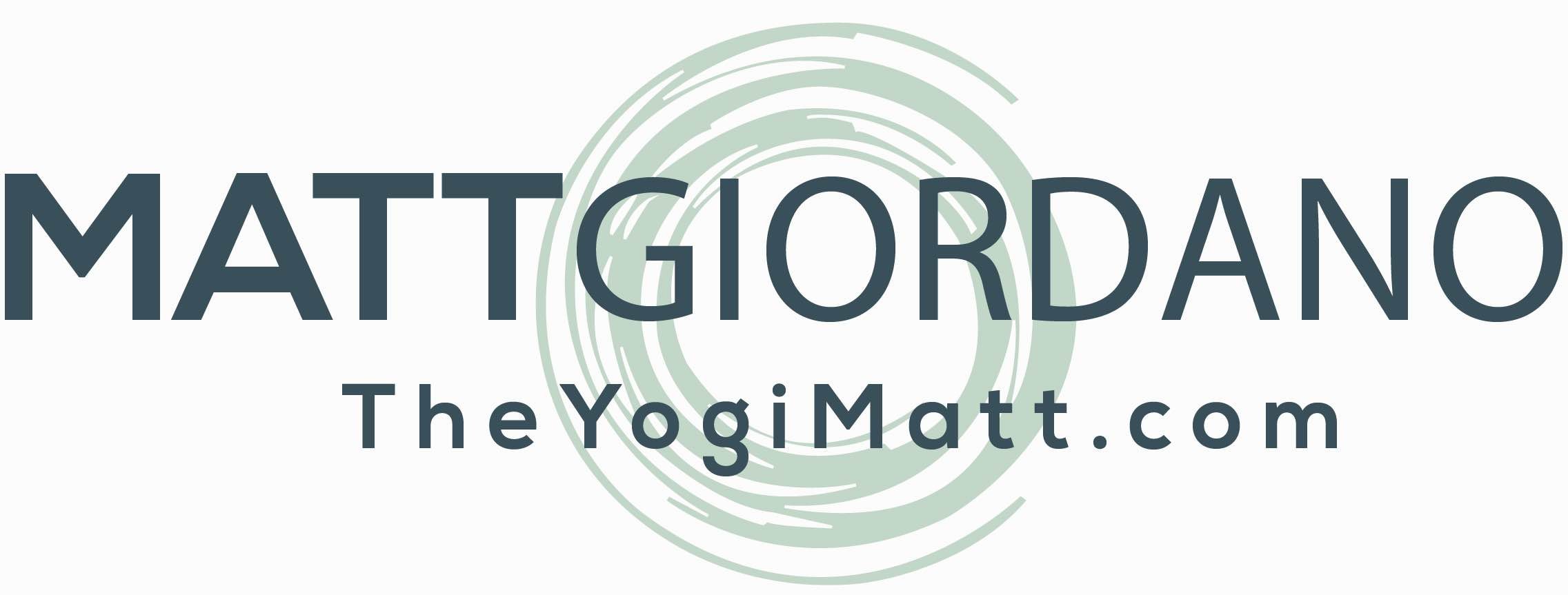
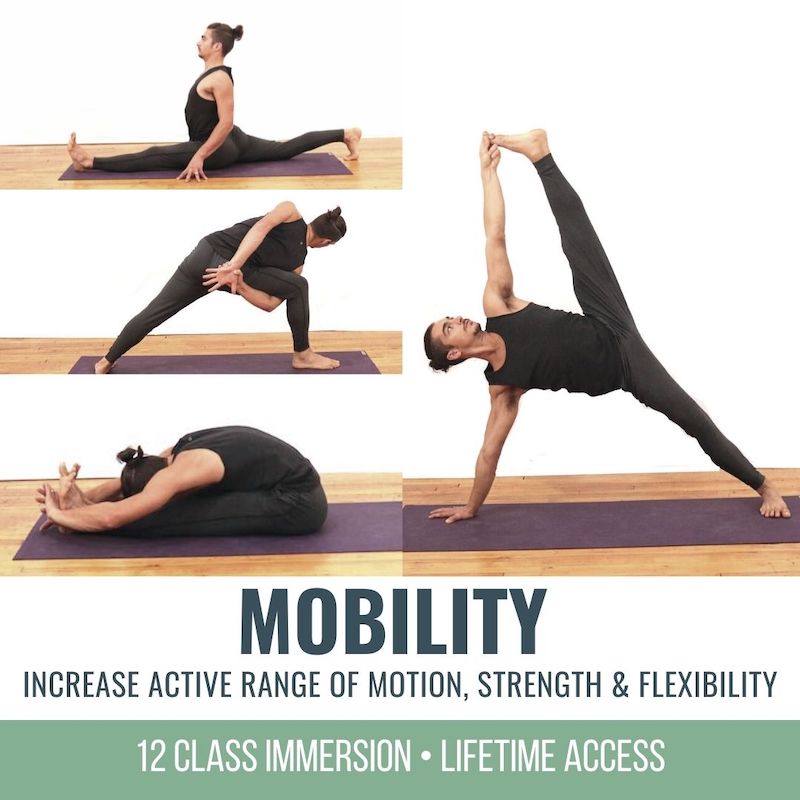



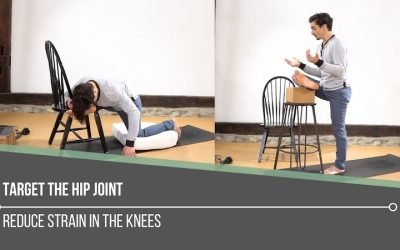

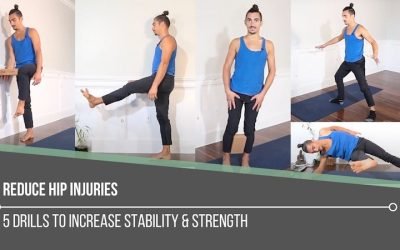
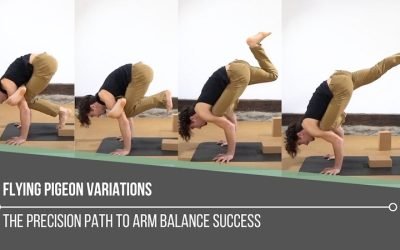
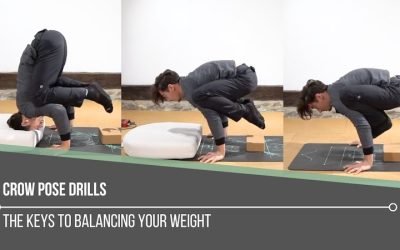
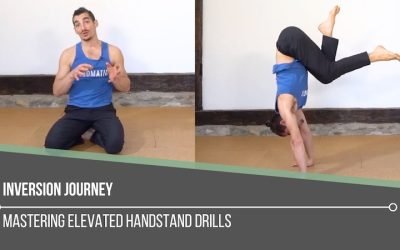

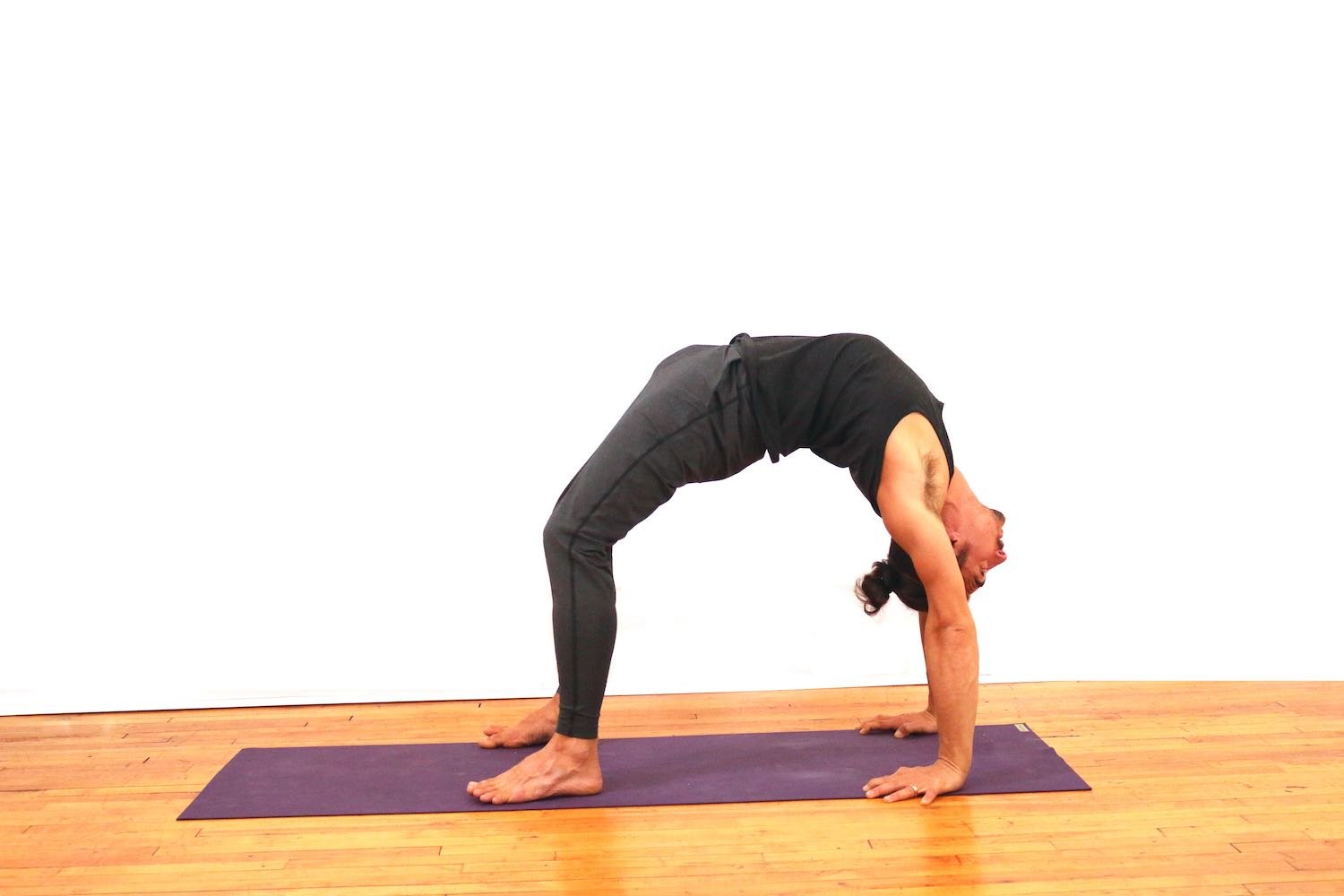
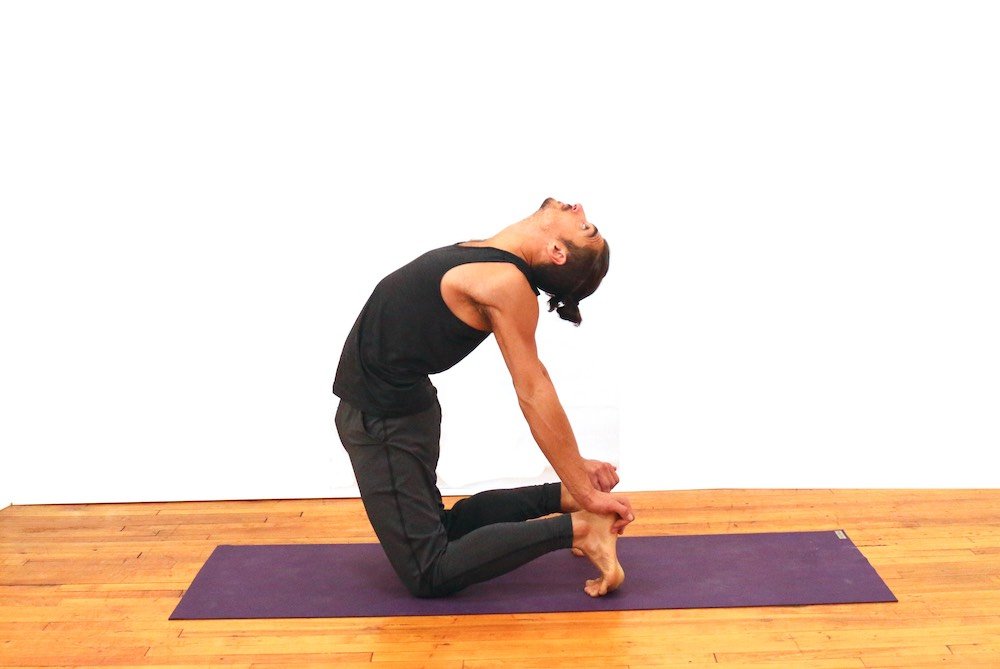
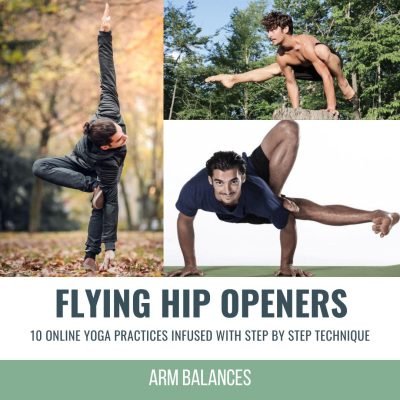
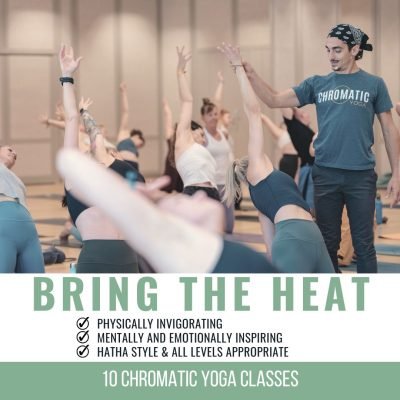

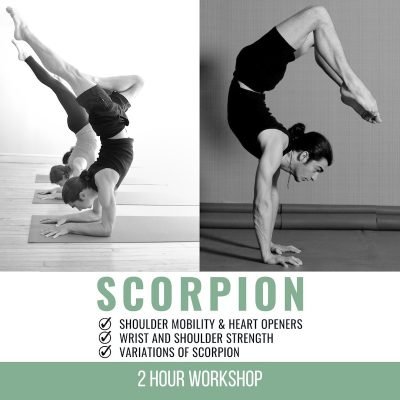
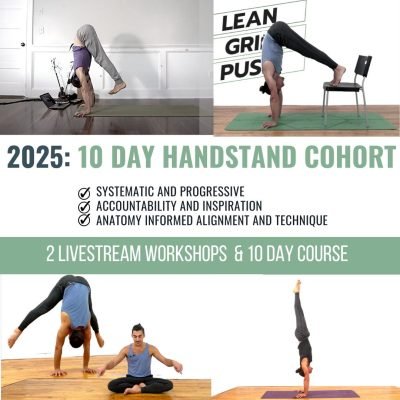
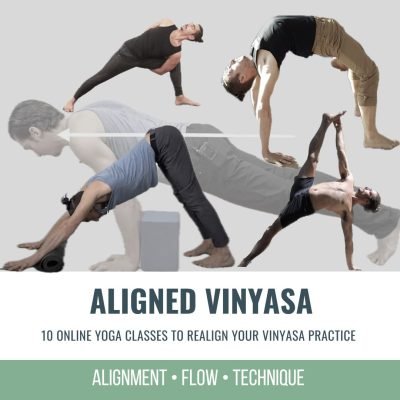
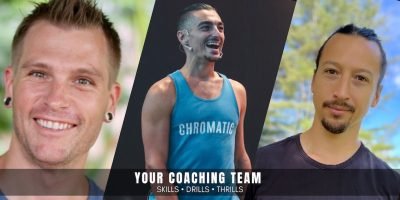
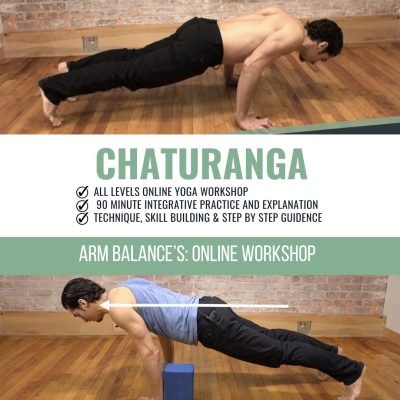
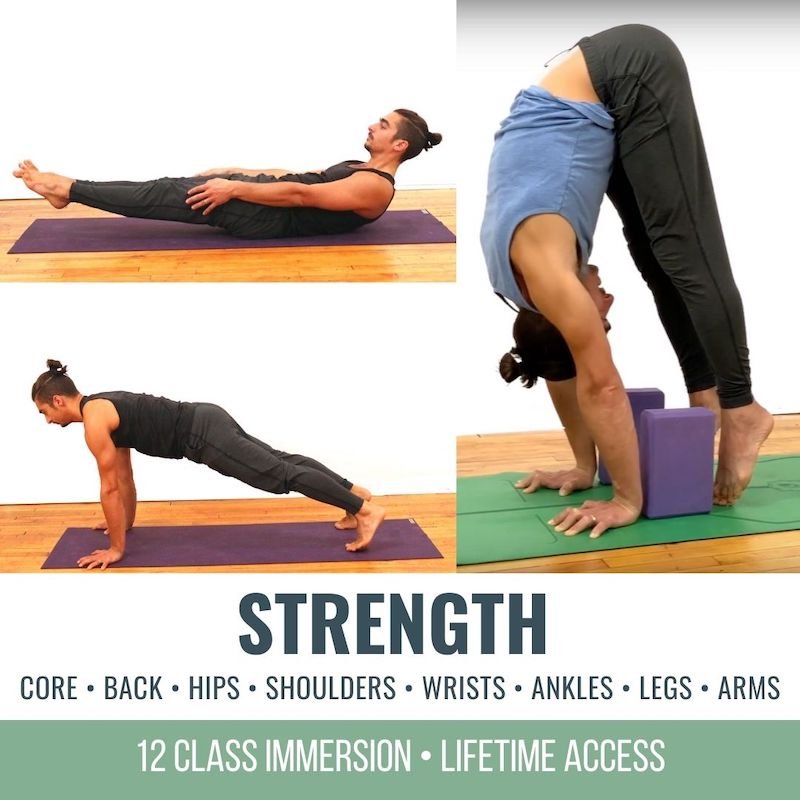

![Archna Mohan chromatic yoga backbend techniques: 12 classes [backbend technique to relieve back pain "bowing the spine']](https://www.theyogimatt.com/wp-content/uploads/2021/10/Archna-Mohan-chromatic-5.jpg)
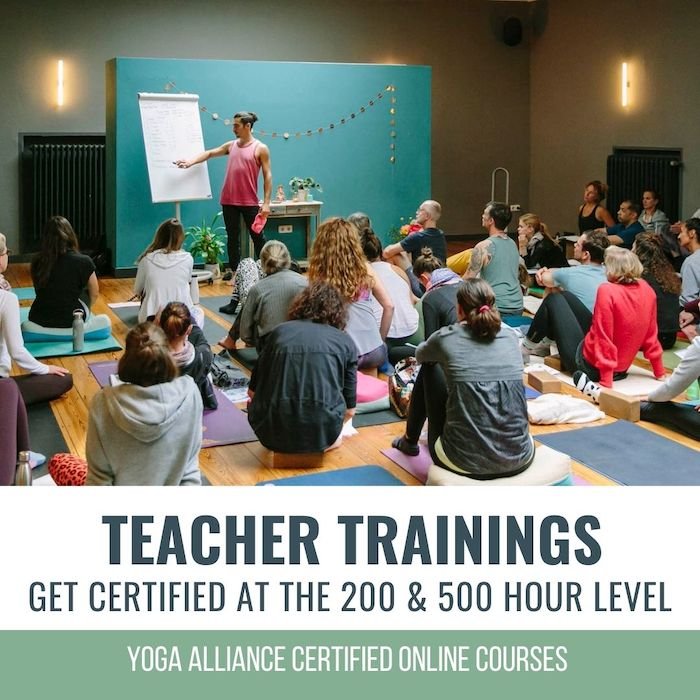



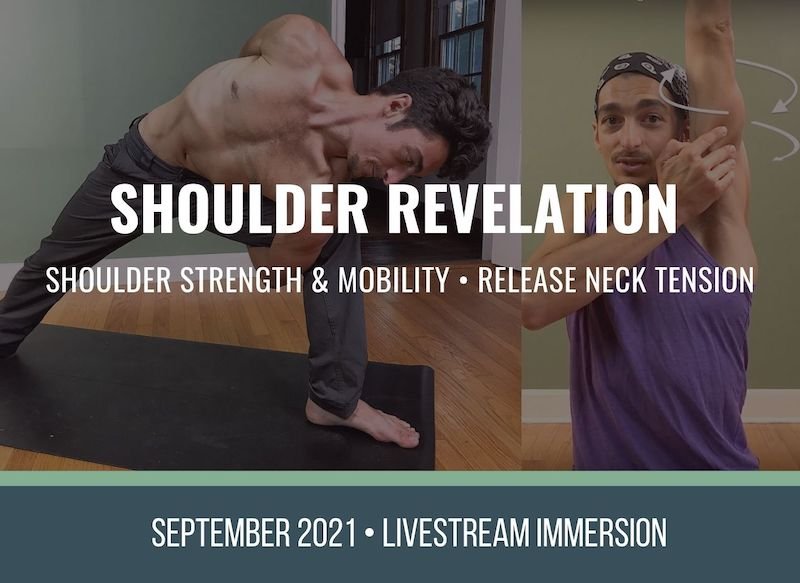


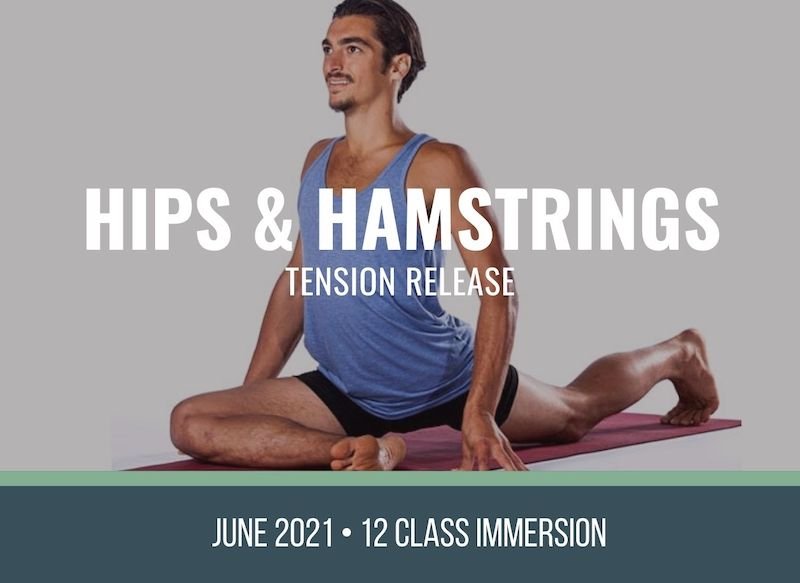
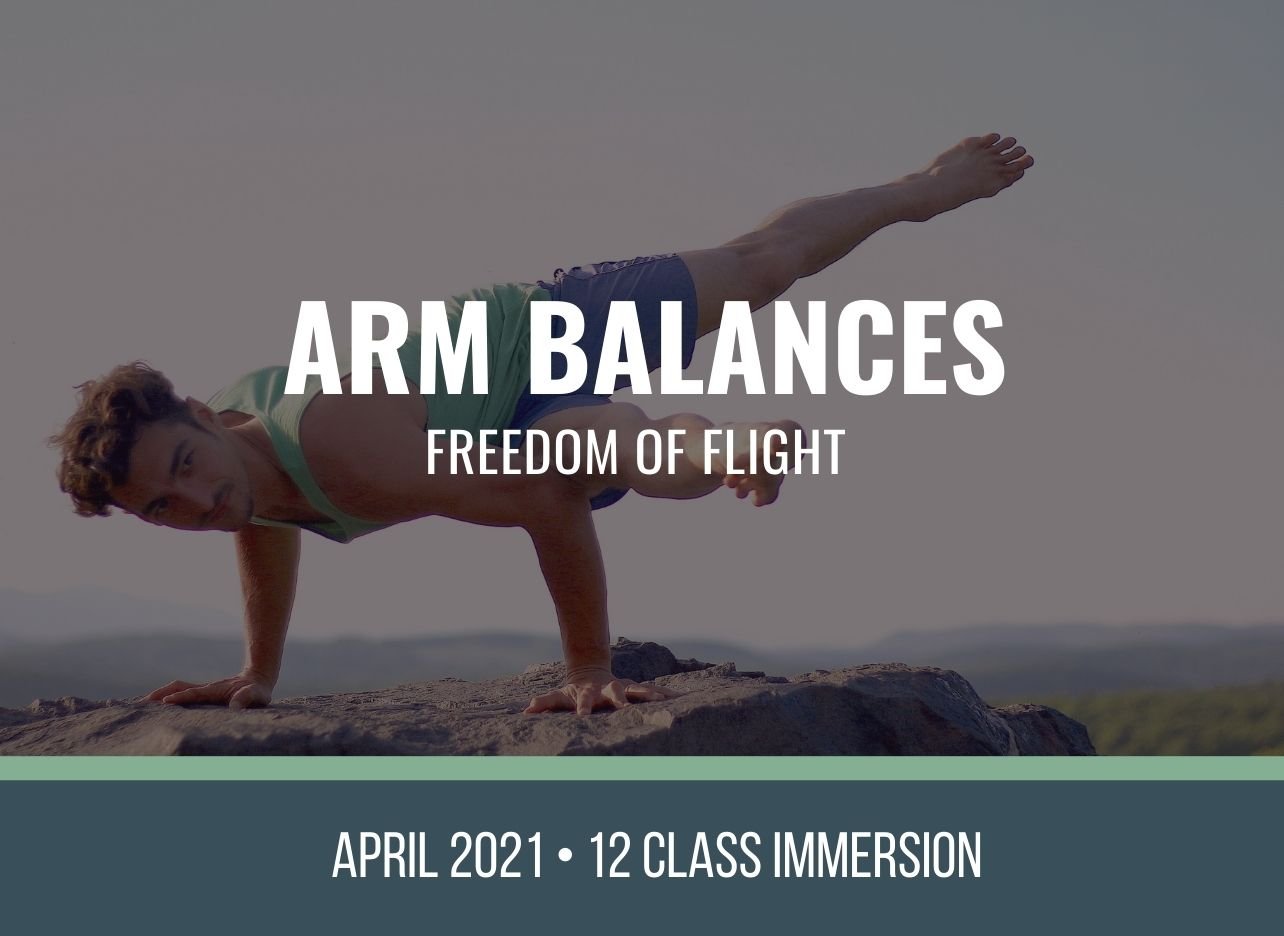
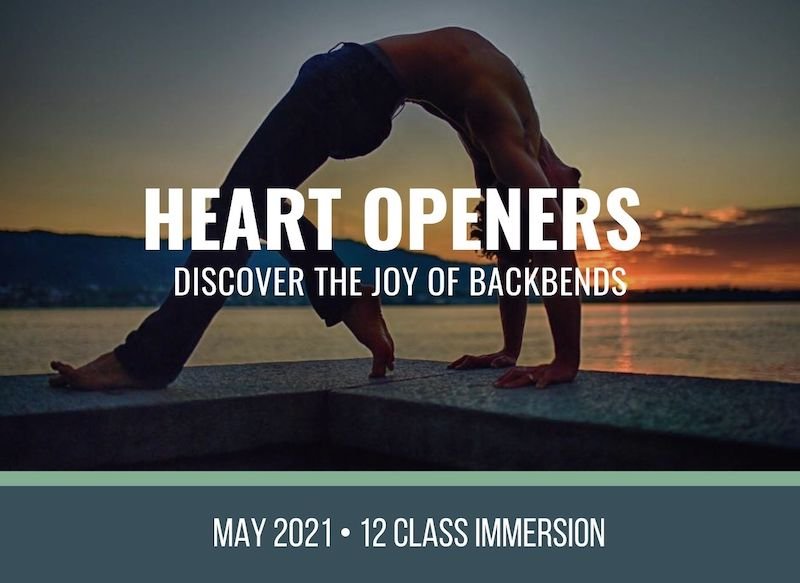
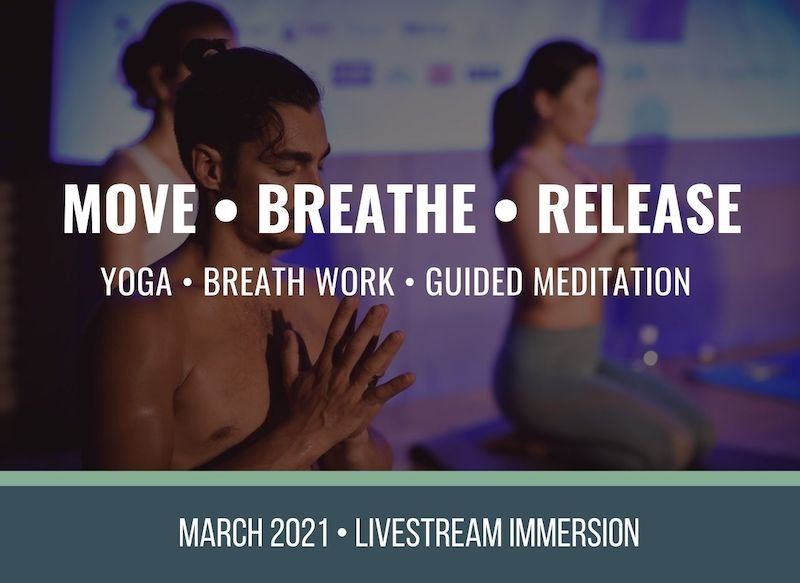
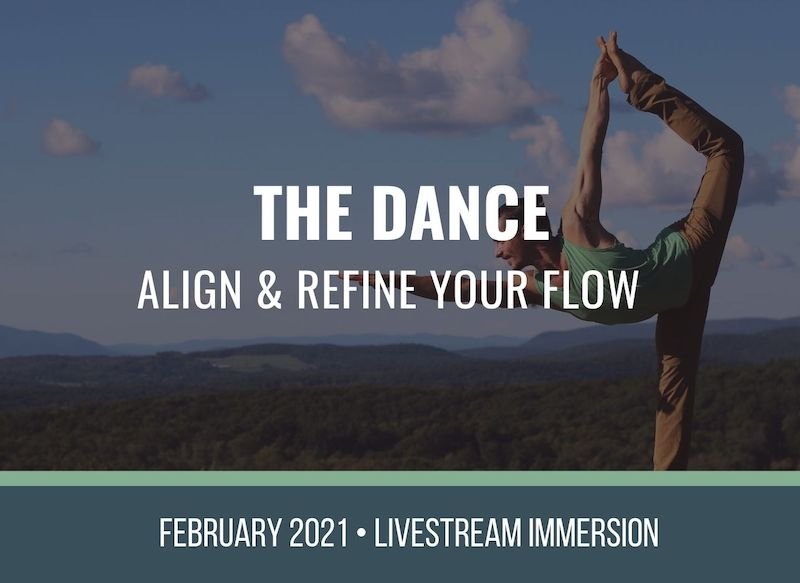
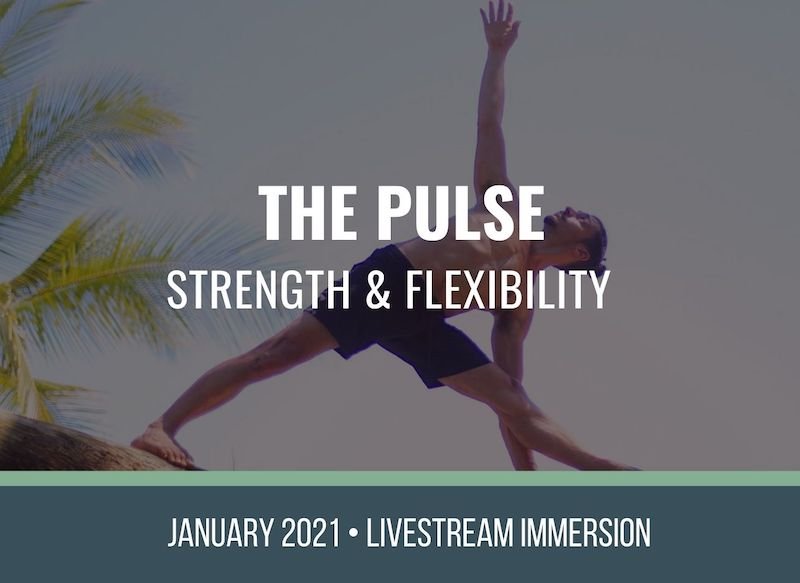
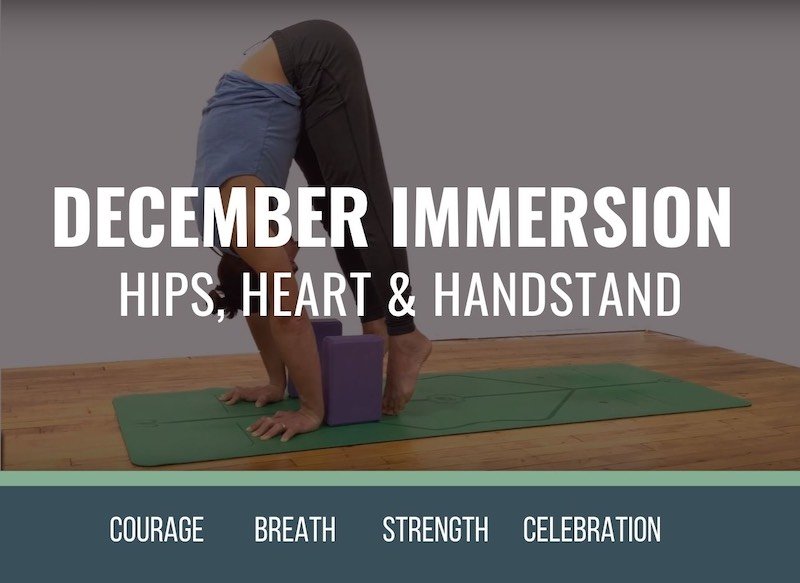
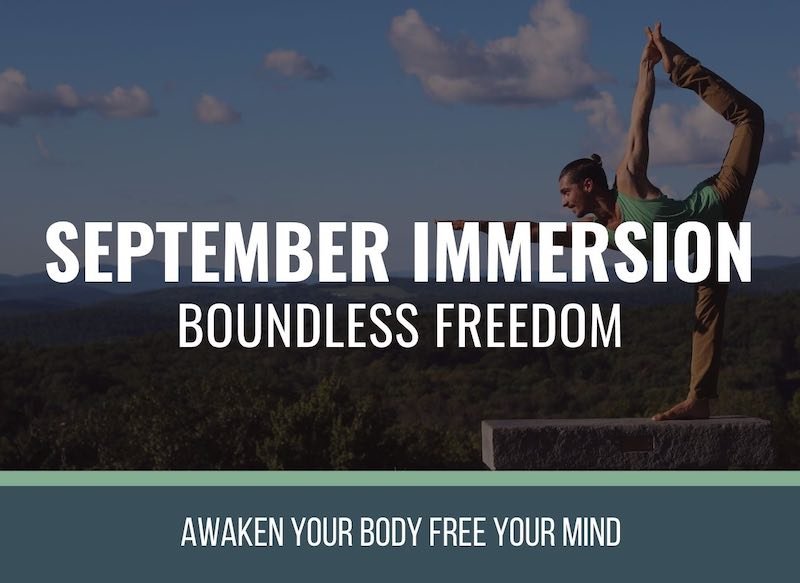



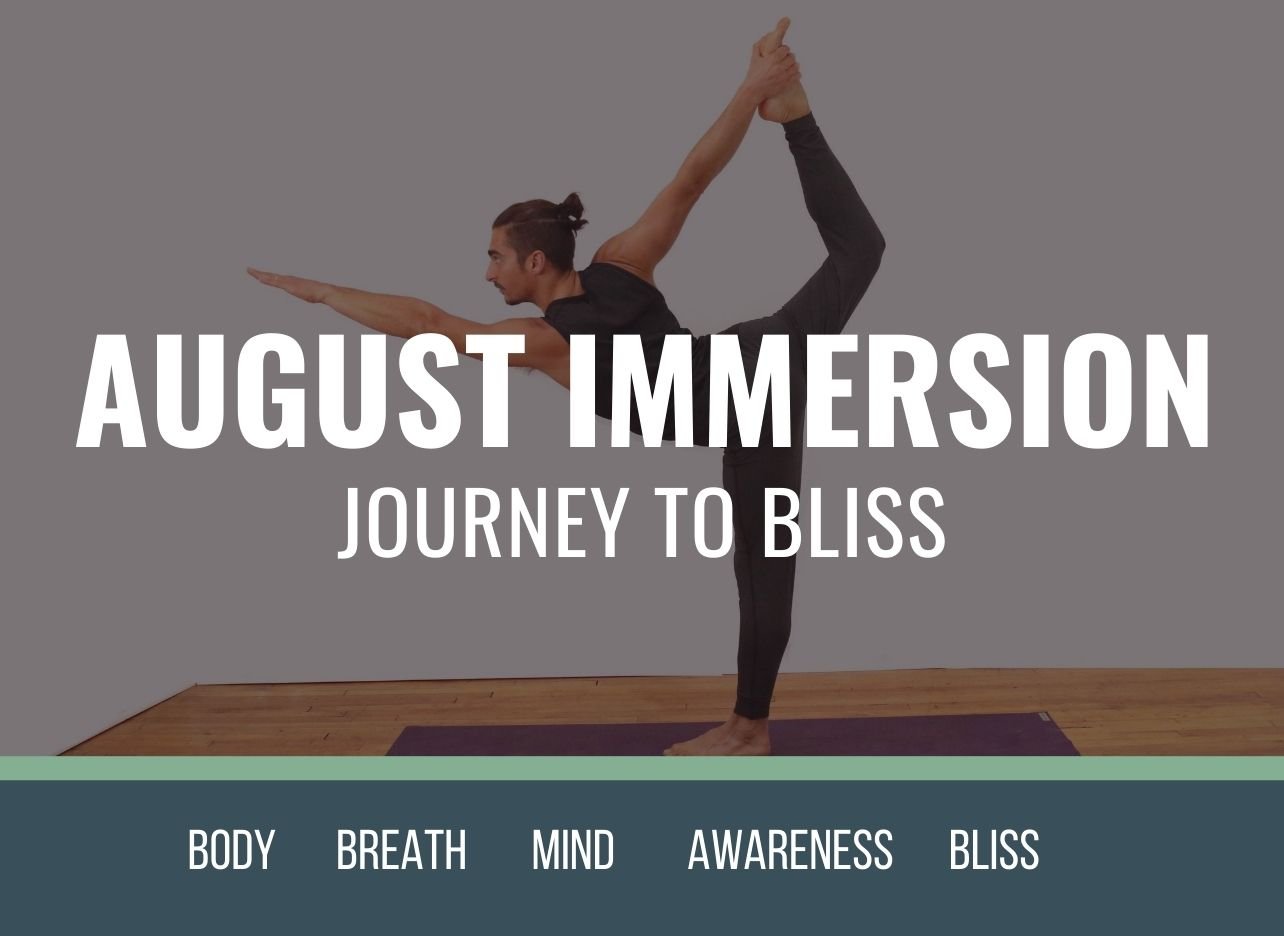

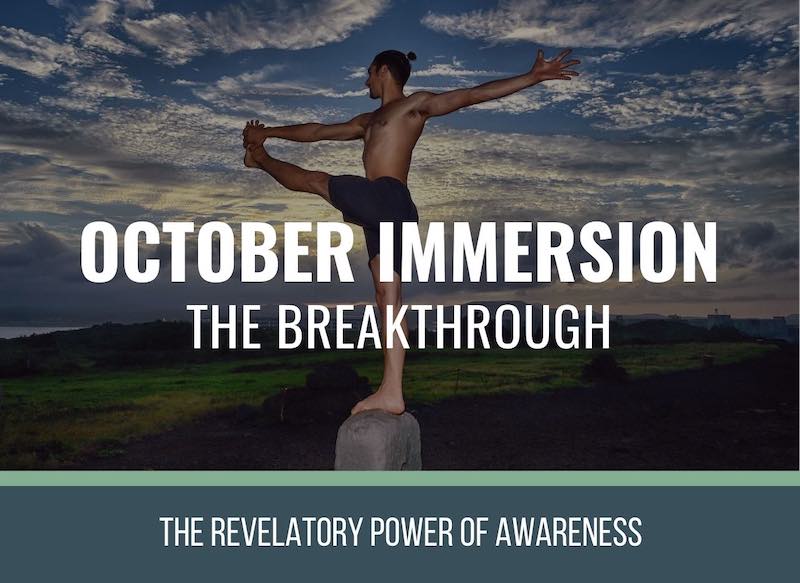
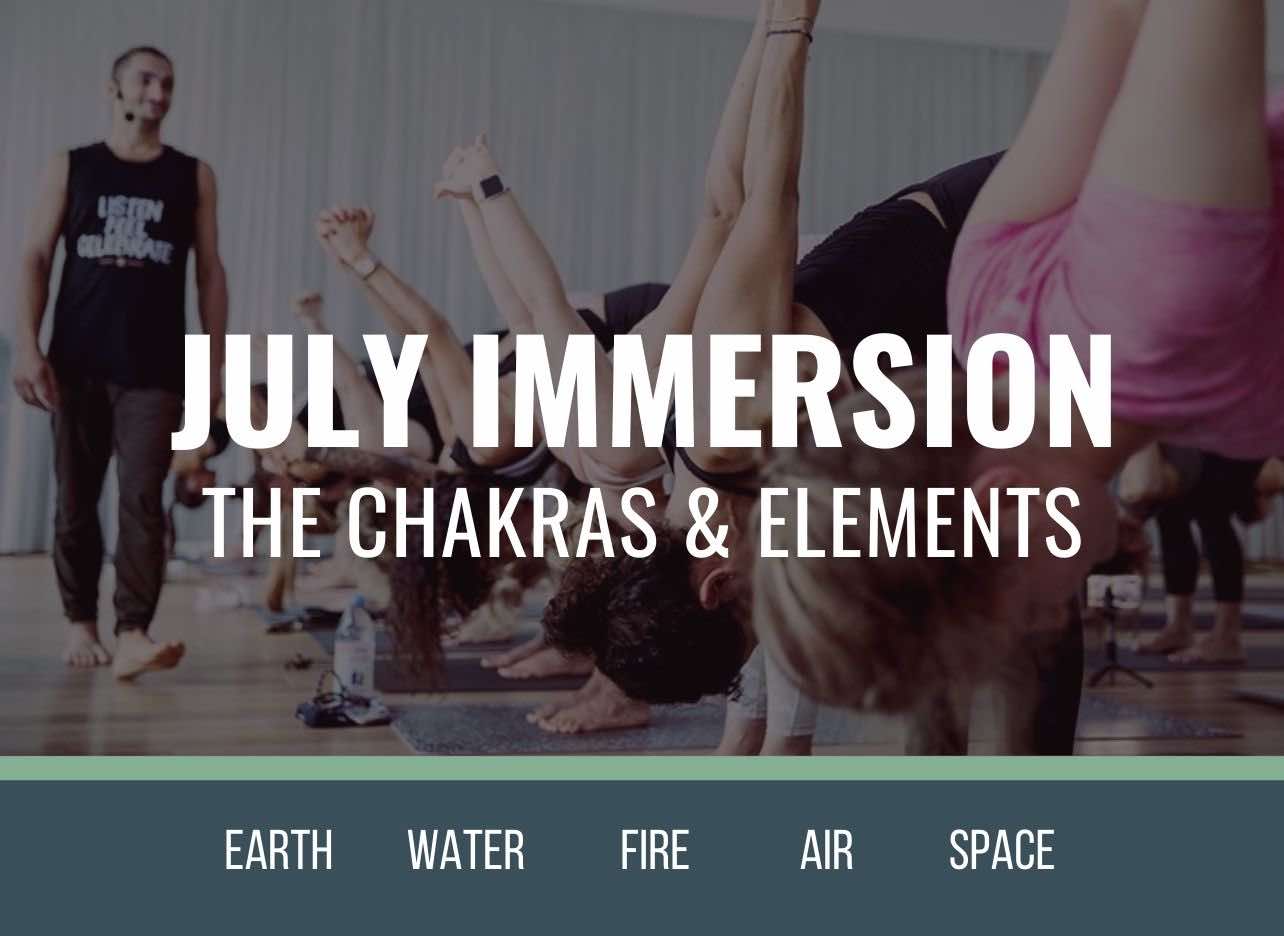




![200 hour horizontal yoga backbend techniques: 12 classes [backbend technique to relieve back pain "bowing the spine']](https://www.theyogimatt.com/wp-content/uploads/2020/09/200-hour-horizontal.jpg)
![10 yoga backbend techniques: 12 classes [backbend technique to relieve back pain "bowing the spine']](https://www.theyogimatt.com/wp-content/uploads/2020/07/10.jpeg)

